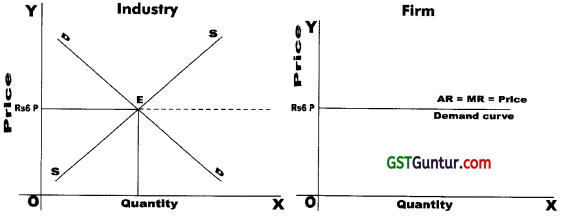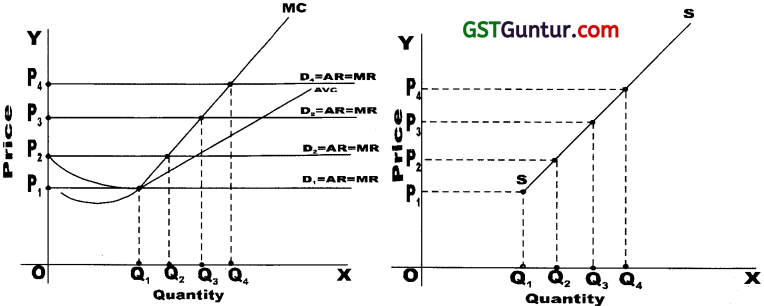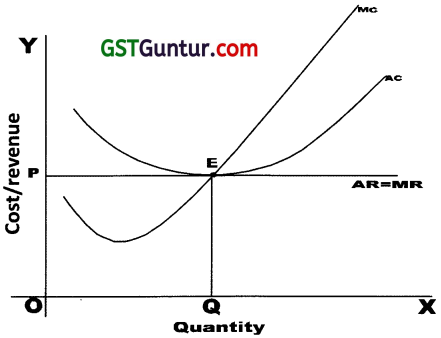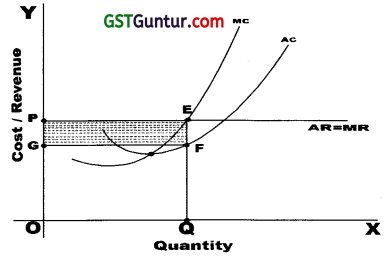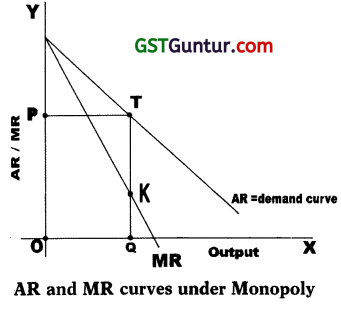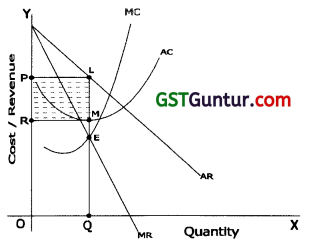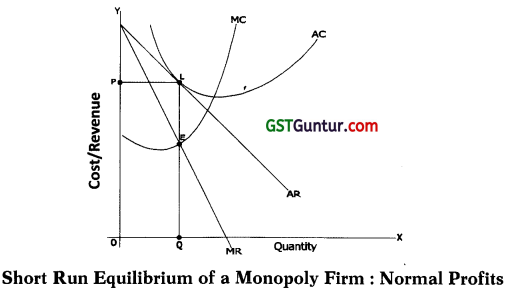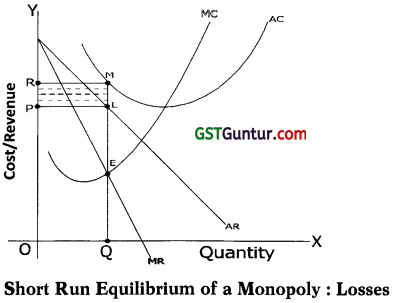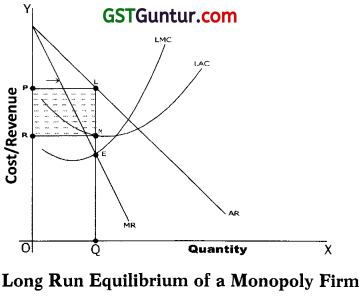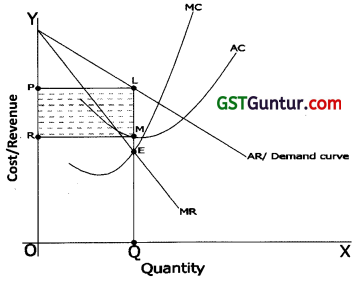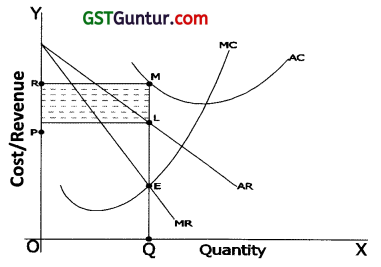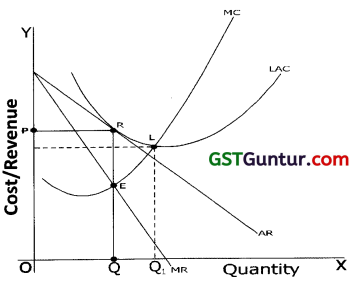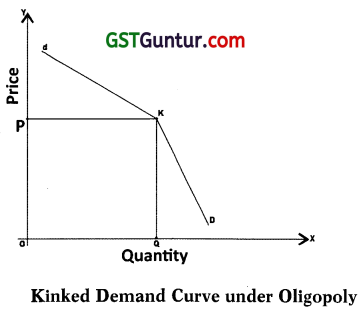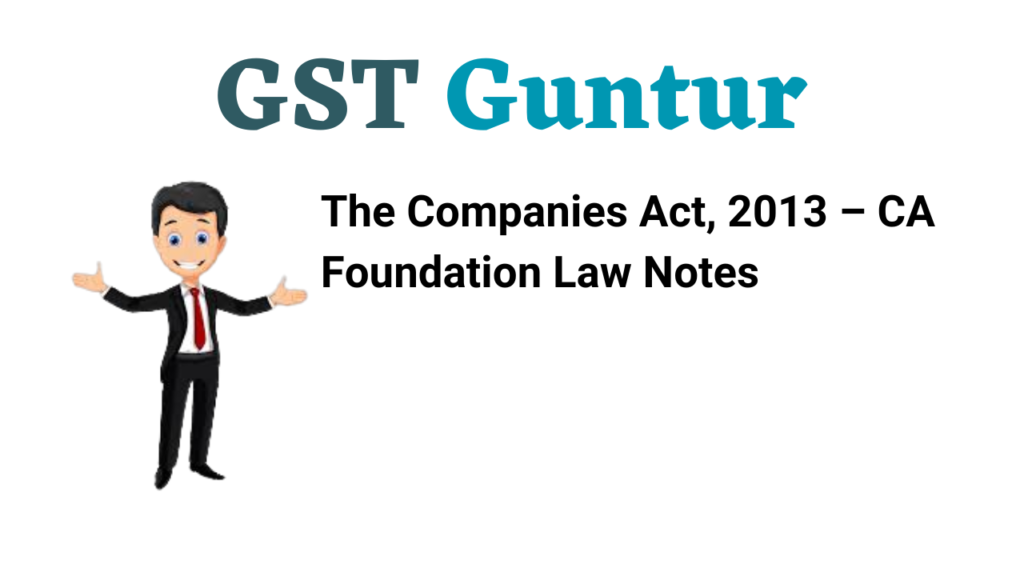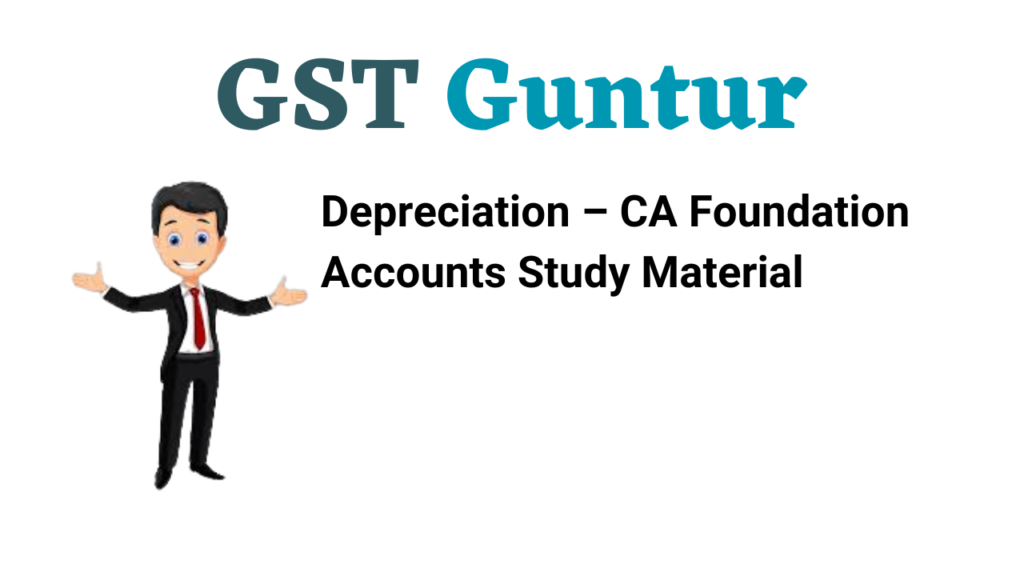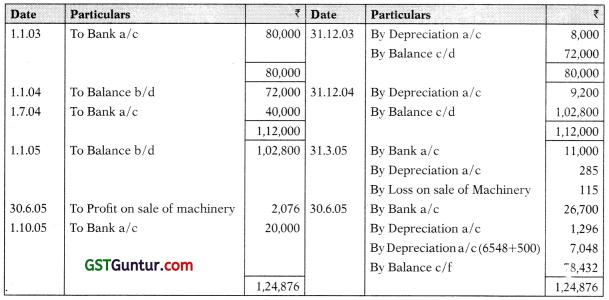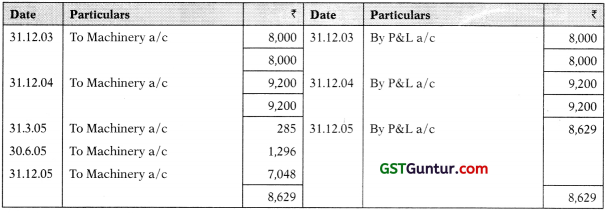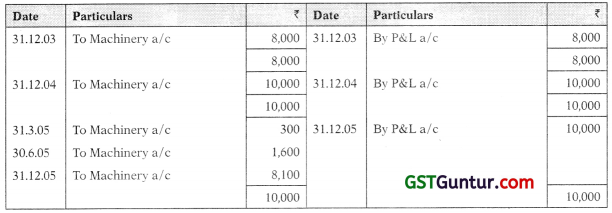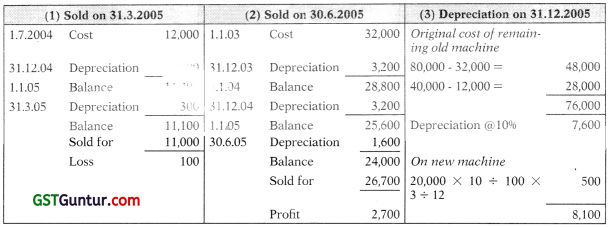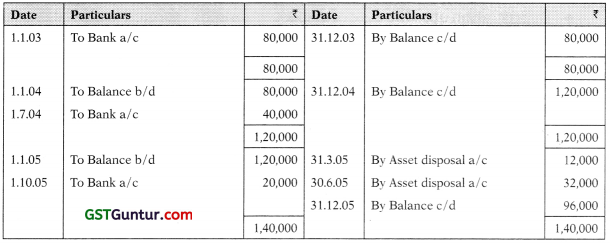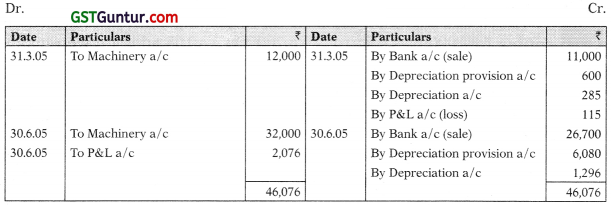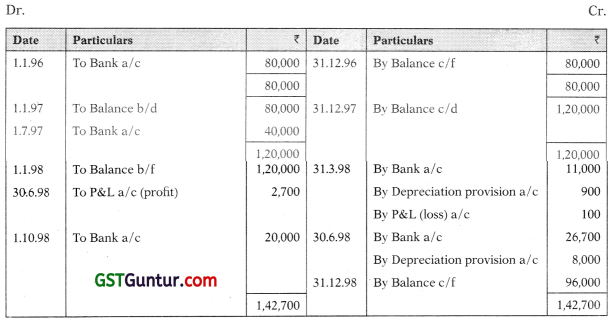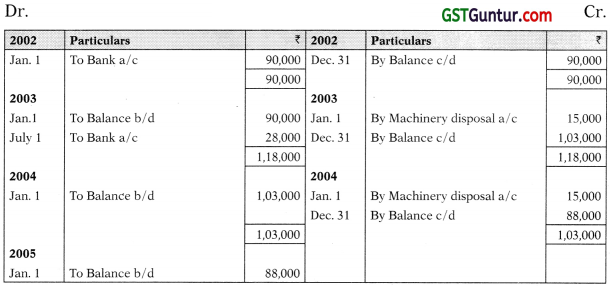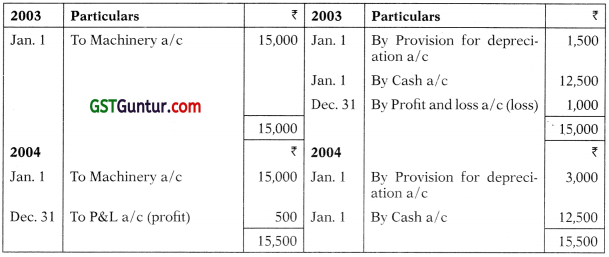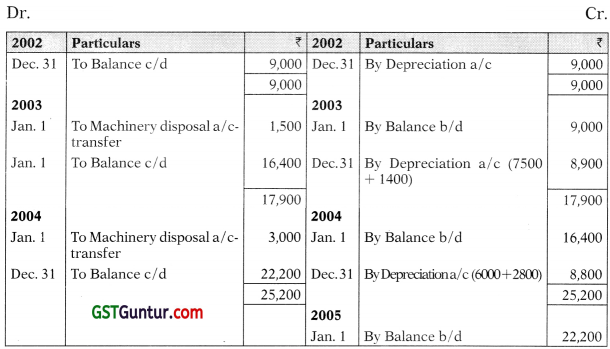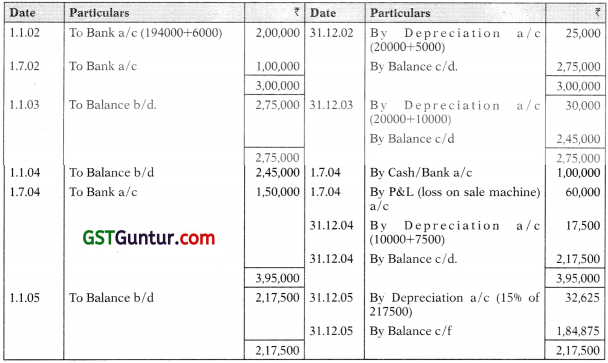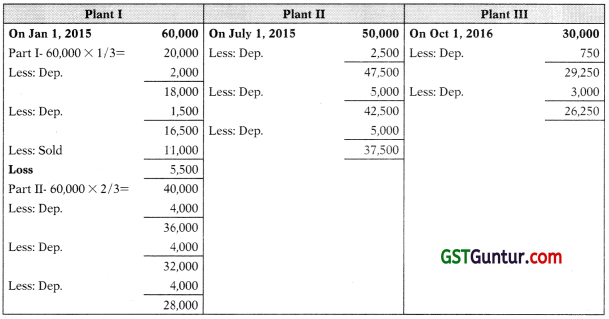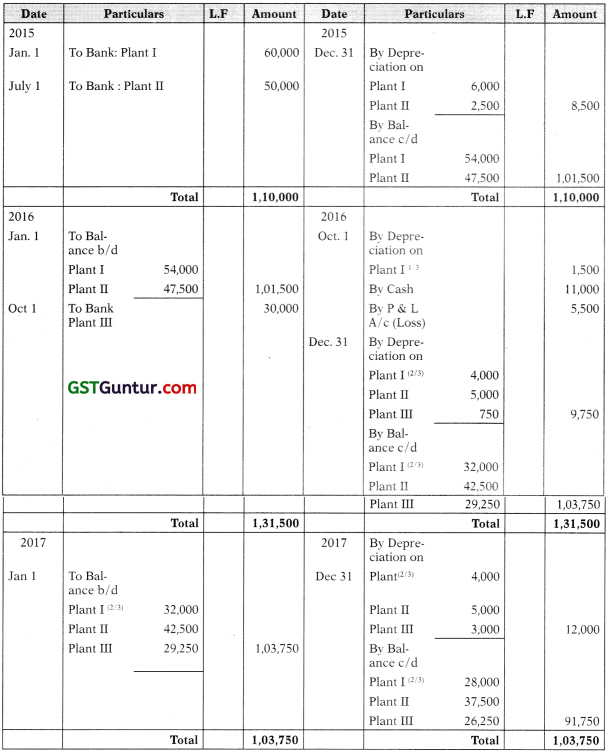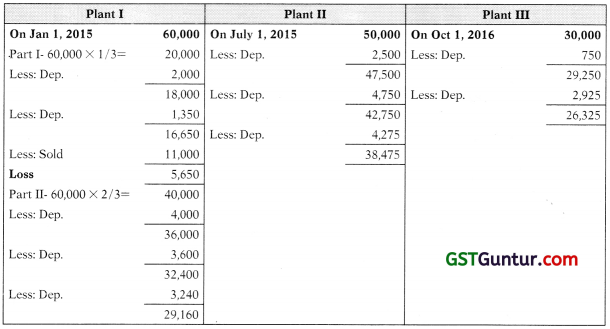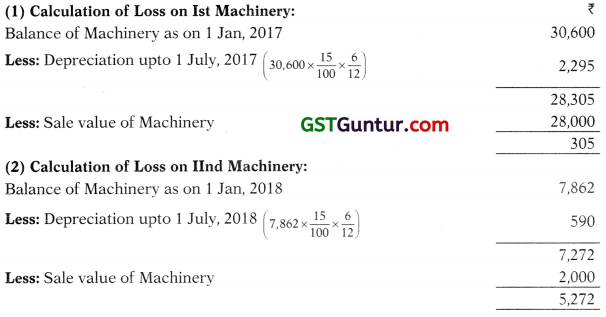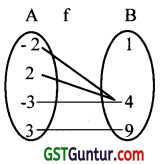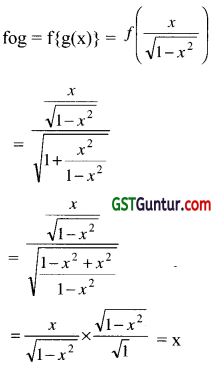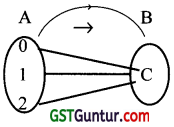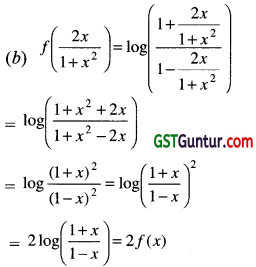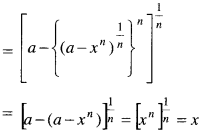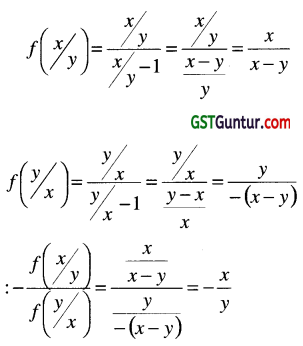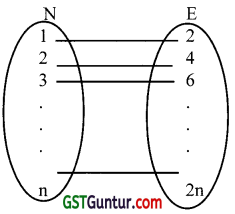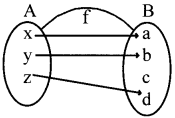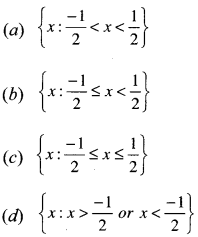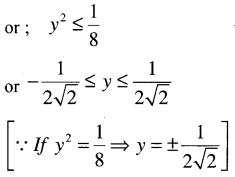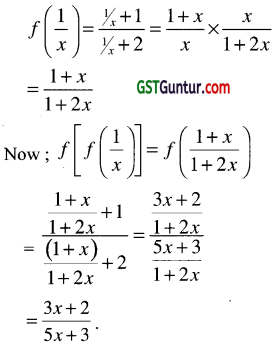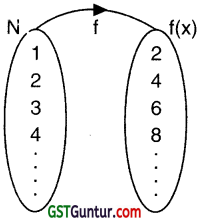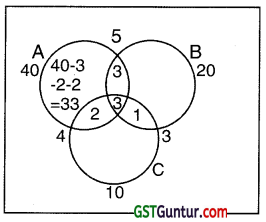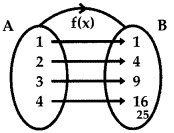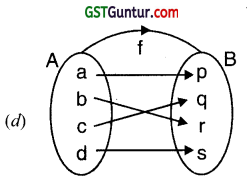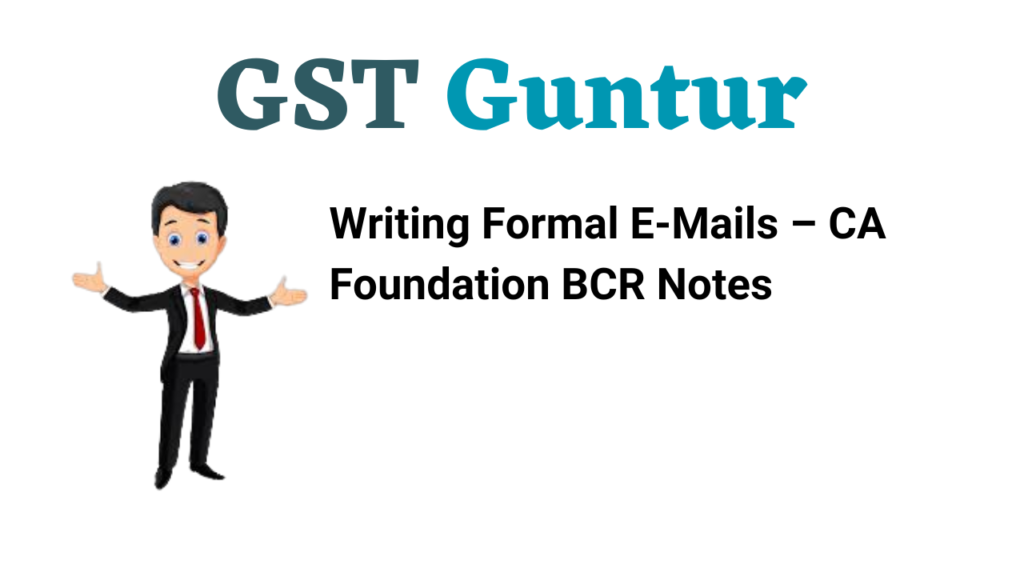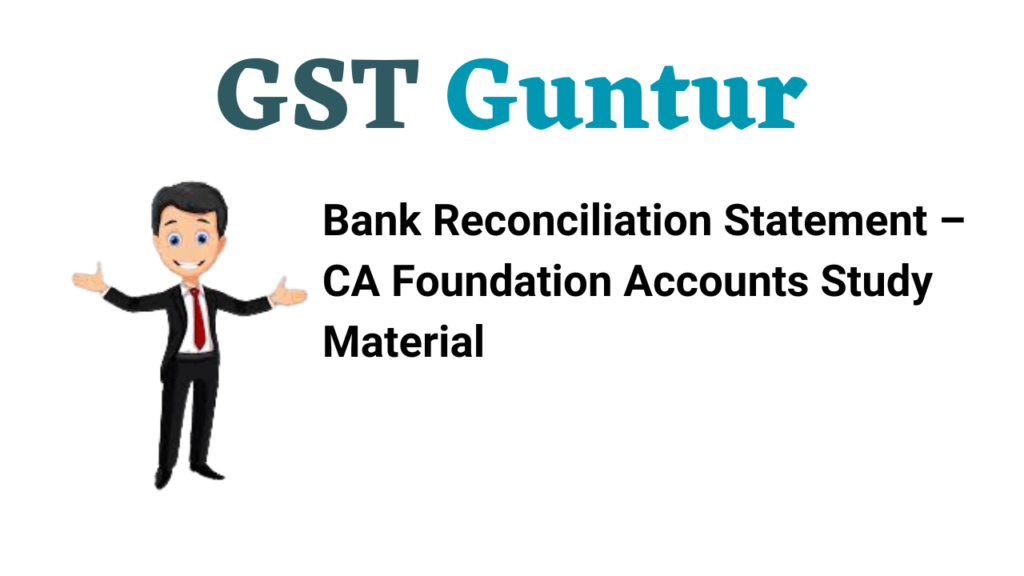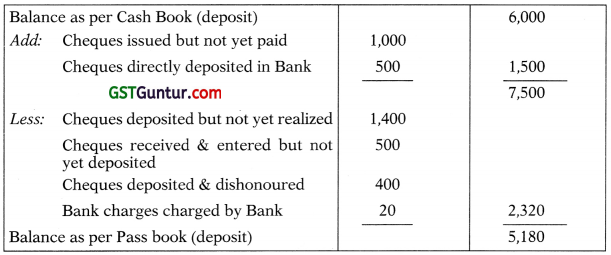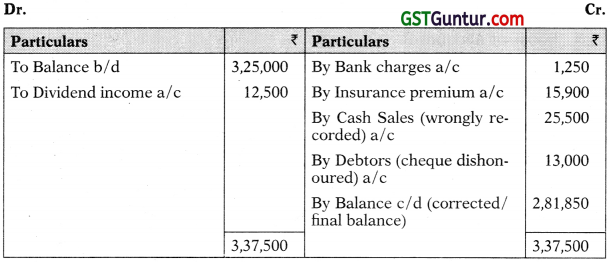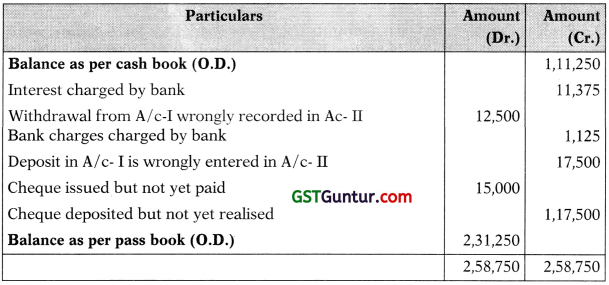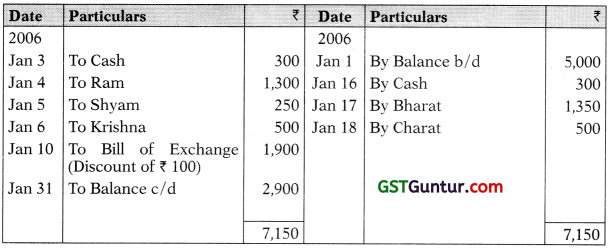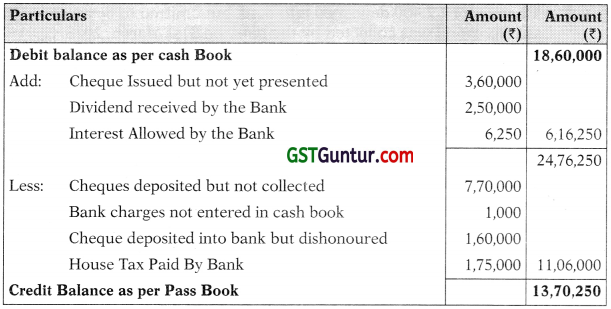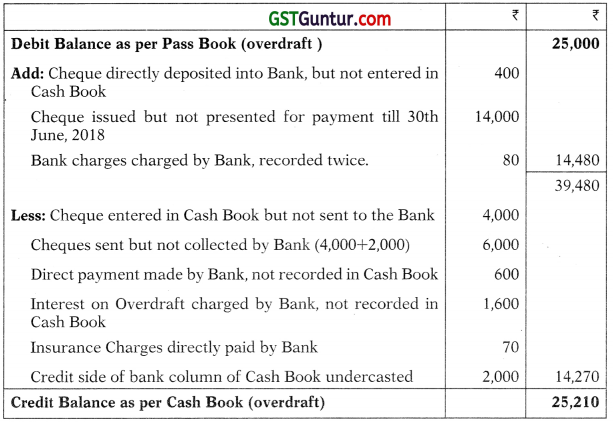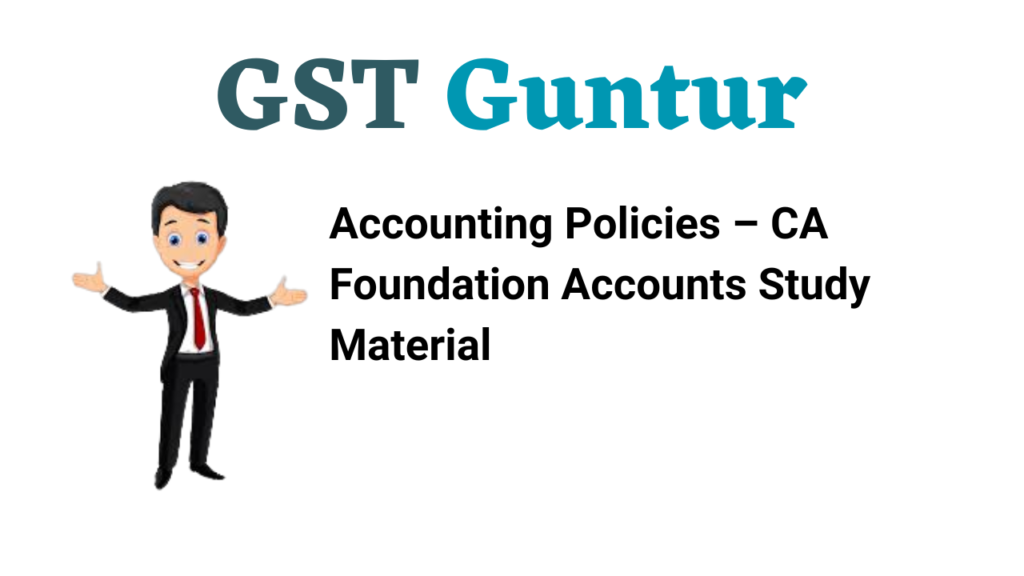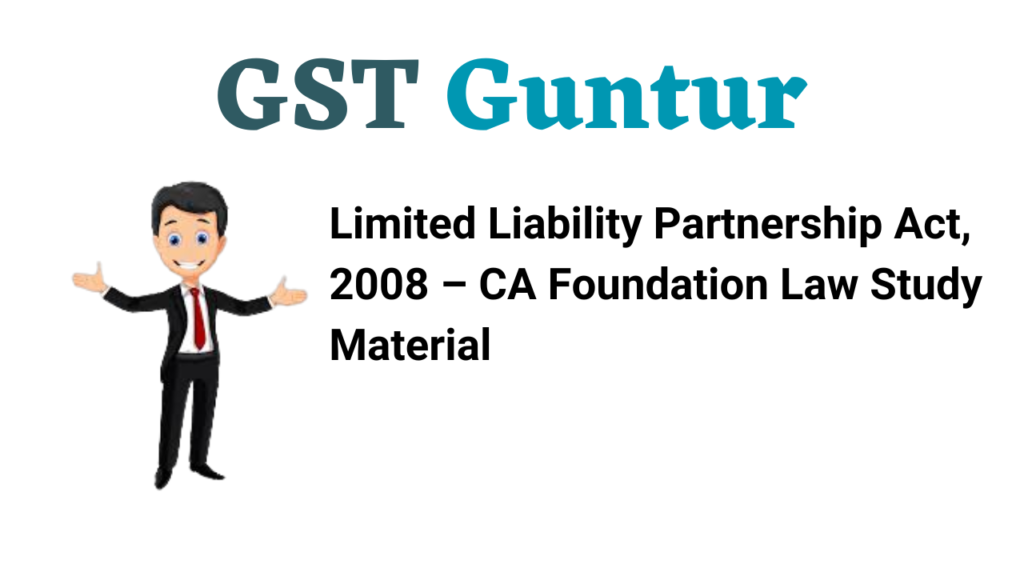Browsing through The Companies Act, 2013 – CA Foundation Law Notes help students to revise the complete subject quickly.
The Companies Act, 2013 – CA Foundation Business Law Notes
Introduction:
The Companies Act, 2013 was preceded by the Companies Act, 1956. A need was felt to replace the Companies Act, 1956 with a new legislation due to the changes in the economic environment in India as well as abroad. The Companies Act, 2013 was enacted to consolidate and amend the law relating to the companies.
The Companies Act, 2013 contains 470 sections and seven schedules which has been divided into 29 chapters. A substantial part of this Act is in the form of Companies Rules. The Companies Act, 2013 seeks to make our corporate regulations more contemporary. It aims to:
- Consolidate and amend the law relating to the companies.
- Meet the changed national and international economic environment.
- Accelerate the expansion and growth of our economy.
- Increase accountability in corporate governance.
- Simplify law and regulations (Reduced Sections).
- Strengthen the interests of minority investors.
- Legislate the role of whistle-blowers.
- Speedy settlement of company disputes (NCLT/NCLAT).
- Impose stringent punishment for violations and mismanagement.

Applicability of the Companies Act, 2013:
→ As per Section 1(4), it applies to:
- Companies incorporated under this Act or under any previous company law
- Insurance companies, except if inconsistent with Insurance Act, 1938 or Insurance Regulatory & Development Authority Act, 1999
- Banking companies, except if inconsistent with the provisions of the Banking Regulation Act, 1949
- Companies engaged in generation or supply of electricity, except if inconsistent with Electricity Act, 2003
- Other company governed by any special Act, except if inconsistent with provisions of such special Act
- Such body corporate, incorporated by any Act, as CG may, by notification specify, subject to exceptions, modifications or adaptation.
→ It extends to the whole of India [Section 1(2)]
→ It does not apply to:
- Trusts governed by the Indian Trust Act, 1882
- Societies, club and professional associations governed by the Societies Registration Act, 1860
- Co-operative societies.
Company: Meaning And Its Features:
Meaning:
As defined in the Companies Act, 2013, a “Company” means a company incorporated under this Act or under any previous company law. [Sec. 2(20)]
Lord Justice Lindley has defined a company as – “An association of many persons who contribute money or money’s worth to a common stock and employed it in some trade or business and who share the profit or loss arising there from. The common stock so contributed is denoted in money and is the capital of the company.
The persons who contributed it or to whom it belongs are members. The proportion of capital to which each member is entitled is his share. The shares are always transferable, although the right to transfer them may be restricted.”
According to Chief Justice Marshall, “a corporation is an artificial being, invisible, intangible, existing only in contemplation of law. Being a mere creation of law, it possesses only those properties which the charter of its creation confers upon it, either expressly or as accidental to its very existence.
In the words of professor Haney “A company is an incorporated association, which is an artificial person created by law, having a separate entity, with a perpetual succession and a common seal.” This definition sums up the meaning as well as the features of a company succinctly.

Features of a Company:
I. Separate Legal Entity:
When a company is registered, it becomes a separate legal personality. It comes to have almost | the same rights and powers as a human being. Its existence is distinct and separate from that of its members. A company can own property, have bank account, raise loans, incur liabilities and enter into contracts.
It is a different person altogether from the subscribers to the memorandum of association. Its personality is distinct and separate from the personality of those who compose it. Even members can contract with company, acquire right against it or incur liability to it. Only the creditors of a company can sue it for the debts, and not its members.
In Lee v. Lee Air Farming Limited (1960):
Lee, a qualified pilot held all but one of the shares in the company and by the articles was appointed director of the company and the chief pilot. The life of the employees of the company was insured by an insurer. Lee died while piloting the company’s aircraft and his widow claimed compensation for his death, in the course of his employment.
Insurers challenged the claim on the ground that no compensation was due to Lee, as Lee and Lee Air Farming Limited was one and the same person. Held, there was a valid contract of service between Lee and the company and Lee was therefore, an employee. Lee was a separate person from the company and so compensation was due to the widow. The magic of corporate personality enabled Lee to be the master and servant at the same time. Mrs. Lee’s contention was upheld.
II. Perpetual Succession:
A company has a continued existence and it can be wound up only as per law. A company being a separate legal entity is not affected by the death, insolvency, lunacy etc. of any or all of its members. In case of the death or insolvency of a member, the shares held by him shall be transmitted to his nominee/legal representative or official assignee/official receiver. Even if all the members of a company die, the company survives. Thus, “Members may come and go, but the company goes on forever.”
III. Limited Liability:
The liability of a member depends upon the kind of company of which he is a member. We know that company is a separate legal entity which is distinct from its members.
(i) Thus, in the case of a limited liability company, the liability of the members of the company is limited to the extent of the nominal value of shares held by them. In no case can the share holders be asked to pay anything more than the unpaid value of their shares.
(ii) In the case of a company limited by guarantee, the members are liable only to the extent of the amount guaranteed by them and that too only when the company goes into liquidation.
(iii) However, if it is an unlimited company, the liability of its members is unlimited as well.
IV. Artificial Legal Person:
A company is a legal or judicial person as created by law. It is an artificial person as it is created by a process other than natural birth. It is a person since it is clothed with all the rights of an individual. It can do everything which any natural person can do except be sent to jail, take an oath, marry or practice a learned profession. Hence, it is a legal person in its own sense.
As the company is an artificial person, it can act only through some human agency, viz., directors. The directors cannot control affairs of the company and act as its agency, but they are not the “agents” of the members of the company. The directors can either on their own or through the common seal (of the company) can authenticate its formal acts.
Thus, a company is called an artificial legal person.
V. Separate Property:
The company being a separate legal entity can own property, have banking account, raise loans, incur liabilities and enter into contracts. Even members can contract with company, acquire right against it or incur liability to it. A company is capable of owning, enjoying and disposing of property in its own name.
Although the capital and assets are contributed by the shareholders, the company becomes the owner of its capital and assets. The shareholders are not the private or joint owners of the company’s property. A member does not even have an insurable interest in the property of the company.
The leading case on this point is of Macaura v. Northern Assurance Co. Limited (1925):
Macaura (M) was the holder of nearly all (except one) shares of a timber company. He was also a major creditor of the company. M Insured the company’s timber in his own name. The timber was lost in a fire. M claimed insurance compensation. Held, the insurance company was not liable to him as no shareholder has any right to any item of property owned by the company, for he has no legal or equitable interest in them.

VI. Common Seal:
A company being an artificial person cannot sign a document as a natural person can do. The common seal is a seal used by a company as a substitute for a signature. In legal terms the common seal is the official signature of the company. As per Companies Amendment Act, 2015, the provision of a common seal has been made optional for a company. It is a metal seal on which the name of the company is engraved. [Section 12(3)(b)]
In case a company does not have a common seal, the authorization is made as per the articles. Table F of the articles states that “such authorization shall be by two directors or by a director and the Company Secretary, wherever the company has appointed a Company Secretary.”
The Companies (Amendment) Act, 2015 has made the common seal optional by omitting the words “and a common seal” from Section 9 so as to provide an alternative mode of authorization for companies who opt not to have a common seal.
Rational for this amendment is that common seal is seen as a relic of medieval times. Even in the U.K., common seal has been made optional since 2006. This amendment provides that the documents which need to be authenticated by a common seal will be required to be so done, only if the company opts to have a common seal.
VII. Separation of ownership from management:
The shareholders who are the owners of the share capital of the company and they bear risk but they do not actually manage the company. The management is vested in the board of directors who are elected by the shareholders.
VIII. Can Sue and be sued:
A company can sue others and it can be sued in its own name.
IX. Transferability of shares:
The capital of a company is divided into shares. Shares of a company are movable property, transferable subject to certain conditions which may be provided in the articles.
Is Company a Citizen?
→ A company has nationality and domicile and residence.
→ But it is not a citizen and therefore cannot be said to have the fundamental rights expressly conferred upon citizens only. (State Trading Corporation of India Ltd. v. CTO 1963, 33 Comp. Cas. 1057 (SC). However those fundamental rights which are available to all persons, whether citizens or not, like the right to equality, etc. are available to the company.
→ As per Citizenship Act, 1955, only natural persons can be citizens of India. So a company cannot be a citizen of India.

Is Company The Property Of Shareholders/Members?
The company is not the property of its shareholders. All the property in the name of the company is its separate property which is controlled, managed and disposed of by the company in its own name. Thus the company is the owner of its assets and capital. Moreover, the company being a separate legal person, it cannot be construed as property of the shareholders.
The decision of the Supreme Court in the case, National Textile Workers Union v. P.R. Ramkrishnan, AIR 1993 (SC), has set at rest at the debate which was going on this issue. According to the verdict given in this case, “a company, according to the new socio-economic thinking is a social institution having duties and responsibilities towards the community in which it functions.
Maximization of social welfare should be the legitimate goal of a company and shareholders should be regarded not as proprietors of the company, but merely as suppliers of capital entitled to no more than reasonable return and the company should be responsible not only to shareholders but also to workers, consumers and the other members of the community and should be guided by consideration of national economy and progress.”

Corporate Veil Theory:
Corporate Veil:
From the juristic point of view a company is a legal person distinct from its members (Salomon v. Salomon & Co. Ltd.). This principle may be referred to as the veil of incorporation. The effect of his principle is that there is a fictional veil between the company and its members.
Corporate Veil refers to a legal concept whereby the company is identified separately from the members of the company. Thus, the shareholders are protected from the acts of the company. The Salomon v. Salomon and Co Ltd. laid down the foundation of the concept of corporate veil or independent corporate personality.
(Veil is a piece of fine material worn by women to protect or conceal the face.)
In Salomon v. Salomon & Co. Ltd. the House of Lords laid down that a company is a person distinct and separate from its members. In this case, Salomon incorporated a company named “Salomon & Co. Ltd.”, with seven subscribers consisting of himself, his wife, four sons and one daughter. This company took over the personal business assets of Salomon for £ 38,782 and in turn, Salomon took 20,000 shares of £ 1 each, debentures worth £ 10,000 of the company with charge on the company’s assets and the balance in cash.
His wife, daughter and four sons took up one share each. Subsequently, the company went into liquidation due to general trade depression. The unsecured creditors to the tune of £ 7,000 contended that Salomon could not be treated as a secured creditor of the company, in respect of the debentures held by him, as he was the managing director of the company, and the company and Solomon were one and the same person.
It was held by Lord Mac Naughten:
“The Company is at law a different person altogether from the subscribers to the memorandum, and though it may be that after incorporation the business is precisely the same as it was before and the same persons are managers, and the same hands receive the profits, the company is not in law the agent of the subscribers or trustees for them. Nor are the subscribers, as members, liable, in any shape or form, except to the extent and in the manner provided by the Act.”
Thus, this case clearly established that company has its own existence and as a result, a shareholder cannot be held liable for the acts of the company even though he holds virtually the entire share capital. The whole law of corporation is in fact based on this theory of separate corporate entity.
Lifting of Corporate Veil:
‘Lifting the veil’ means looking behind the company as a legal person Le.; disregarding the corporate entity and paying regard instead to the realities behind the legal form. Where the courts ignore the corporate personality and concern themselves directly with the members or directors, the corporate veil may be said to have been lifted.
Where the Courts ignore the company and concern themselves directly with the members or managers, the corporate veil may be said to have been lifted. Only in appropriate circumstances, the Courts are willing to lift the corporate veil and that too, when questions of control are involved rather than merely a question of ownership.
The following are the cases where company law disregards the principle of corporate personality or the principle that the company is a legal entity distinct and separate from its shareholders or members:
1. To determine the character of the company i.e. to find out whether company is an enemy or a friend:
The leading case in this point is Daimler Company Ltd. v. Continental Tyre & Rubber Co. (Great Britain) Ltd. [1916]
2 AC 307. In this case the Daimler Company was incorporated in London. Its majority shareholders and directors were Germans. On declaration of war between England and Germany in 1914 it was held that the company was a German company. Accordingly, the suit filed by the company to recover a trade debt was dismissed on the ground that such payment would amount to trading with enemy.
If the public interest is not likely to be in jeopardy, the Court may not be willing to crack the corporate shell. But it may rend the veil for ascertaining whether a company is an enemy company. Of course, unlike a natural person, h company does not have mind or conscience; therefore, it cannot be a friend or foe. It may, however, be characterised as an enemy company, if its affairs are under the control of people of an enemy country. For this purpose, the Court may examine the character of the persons who are really at the helm of affairs of the company.
2. Company is formed to evade taxes:
Where corporate entity is used to evade or circumvent tax, the Court can disregard the corporate entity [Juggilal v. Commissioner of Income Tax AIR (SC)]. In certain matters concerning the law of taxes, duties and stamps particularly where question of the controlling interest is in issue. [S. Berendsen Ltd. v. Commissioner of Inland Revenue].
In Sir Dinshaw Maneckjee Petit, Re AIR 1927 Bom. 371, D formed four private companies and transferred his investments to them. D took pretended loans from the companies, which he never repaid. In a legal proceeding the corporate veils of all the companies were lifted and the incomes of the companies treated as if they were of D. The Court decided that the private companies were a sham and the corporate veil was lifted to decide the real owner of the income. Also, affirmed in CITv. Sri Meenakshi Mills Ltd. AIR 1967 SC 819.
3. Company is formed to avoid a legal obligation/welfare legislation:
If the sole purpose for the formation of the company was to use it as a device to reduce the amount to be paid by way of bonus to workmen, the Supreme Court upheld the piercing of the veil to look at the real transaction (The Workmen Employed in Associated Rubber Industries Limited, Bhavnagar v. The Associated Rubber Industries Ltd., Bhavnagar and another).
Workmen of Associated Rubber Industry Ltd., v. Associated Rubber Industry Ltd.:
The facts of the case are that “A Limited” purchased shares of “B Limited” by investing a sum of ₹ 4,50,000. The dividend in respect of these shares was shown in the profit and loss account of the company, year after year. It was taken into account for the purpose of calculating the bonus payable to workmen of the company.
Sometime in 1968, the company transferred the shares of B Limited, to C Limited a subsidiary, wholly owned by it. Thus, the dividend income did not find place in the Profit & Loss Account of A Ltd., with the result that the surplus available for the purpose for payment of bonus to the workmen got reduced.
Here a company created a subsidiary and transferred to it, its investment holdings in a bid to reduce its liability to pay bonus to its workers. Thus, the Supreme Court disregarded the separate existence of the subsidiary company. The new company so formed had no assets of its own except those transferred to it by the principal company, with no business or income of its own except receiving dividends from shares transferred to it by the principal company and serving no purpose except to reduce the gross profit of the principal company so as to reduce the amount paid as bonus to workmen.
4. Formation of subsidiaries to act as agents:
A company may sometimes be regarded as an agent or trustee of its members, or of another company, and may therefore be deemed to have lost its individuality in favour of its principal. Here the principal will be held liable for the acts of that company.
In the case of Merchandise Transport Limited v. British Transport Commission (1982), a transport company wanted to obtain licences for its vehicles, but could not do so if applied in its own name. It, therefore, formed a subsidiary company, and the application for licence was made in the name of the subsidiary. The vehicles were to be transferred to the subsidiary company. Held, the parent and the subsidiary were one commercial unit and the application for licences was rejected.
5. Company formed for fraud/improper conduct or to defeat law:
The corporate veil may be lifted if the company is formed to – (a) defeat the law; (b) defraud creditors; (c) avoid legal obligations (arising by way of a contract). Where the device of incorporation is adopted for some illegal or improper purpose, e.g., to defeat or circumvent law, to defraud creditors or to avoid legal obligations. [Gilford Motor Co. v. Horne]
In Jones v. Lipman [1962] 11 ALL ER 442, the defendant attempted to avoid completing the sale of his house to the plaintiff by transferring to a company formed for the purpose. The court ordered both the defendant and the company specifically to perform the contract with the plaintiff.
6. To determine the technical competence of the company:
In New Horizons Ltd. v. UOI (1997) 89 Comp. Case 849 (SC), a company was formed as joint venture by other companies for purpose of telecom tender. The company was new but its major shareholders had vast experience in the field. However, tender evaluation company rejected the tender on the ground that the company has no experience in the field. Supreme Court held that experience of major shareholders can be considered as experience of the company, for purpose of awarding a tender or contract.
Classes of Companies Under The Act:
The Companies Act, 2013 has broadly classified the companies into various classes.
→ On the basis of number of members: A company may be incorporated as a one-person company, private company or a public company, on the basis of the number of members joining it.
→ On the basis of Liability: Again, on the basis of liability, it may either be an unlimited company, or may be limited by shares or by guarantee or by both.
→ On the basis of control: Companies can be classified as associate company, holding company and subsidiary company on the basis of control.
→ On the basis of access to capital: A company may be classified as a Listed company or an Unlisted company.
→ Other Classifications: Some other forms of classification of companies are Foreign Company, Government Company, Small company, Dormant company, Nidhi Company and Company formed for Charitable Objects.
Companies may be classified into various classes on the following basis:
1. On the basis of liability:
a. Company limited by shares – “Company limited by shares” means a company having the liability of its members limited by x memorandum, to amount, If any, unpaid on the shares respectively held by them; [ i.e.; his personal property cannot be undertaken to meet company’s total debt]. [Sec. 2(22)]
The memorandum of association mentions whether the liability of the members is limited j or not. In these companies there is a share capital divided into shares of fixed amount. The liability of the shareholder is limited to the nominal amount of the shares held by him.
Thus, if a person buys 100 shares of ₹ 10 each, his maximum liability is to the extent of ₹ 1,000 only. He cannot be asked to pay more than this amount. If he has paid ₹ 6 on each share, his remaining liability will be only ₹ 4 per share (i.e. 4 x 100 = ₹ 400). A majority of the companies in India belong to this category.
b. Company limited by guarantee – “Company limited by guarantee” means a company having the liability of its members limited by the memorandum, to such amount as the members may respectively undertake to contribute to the assets of the company in the event of its being wound up. [Sec. 2(21)]
Such an amount is called the Guarantee. The memorandum of association lays down the j guarantee amount. No member is liable to pay more than the amount, which he has guaranteed to contribute.
These companies may or may not have a share capital In the case of a guarantee company with a share capital, the members are required to purchase shares of fixed amount and also give a guarantee for a further sum in the event of winding up.
Generally, guarantee companies are formed for non-trading purposes. Such as promotion of commerce, art, science, sports etc., and do not aim for profit. The Chambers of Commerce, charitable institutions, sport clubs, are generally organized as guarantee companies.
In Narendra Kumar Agarwal v. Saroj Maloo, the Supreme Court has laid down that the right of a guarantee company to refuse to accept the transfer by a member of his interest in the company is on a different footing than that of a company limited by shares. The membership of a guarantee company may carry privileges much different from those of ordinary shareholders.
The common features between a ‘guarantee company’ and ‘the company having share capital’ are legal personality and limited liability. In the latter case, the member’s liability is limited by the amount remaining unpaid on the share, which each member holds. Both of them have to state in their memorandum that the members’ liability is limited.
The point of distinction between these two types of companies is that in the former case the members may be called upon to discharge their liability only after commencement of the winding up and only subject to certain conditions; but in the latter case, they may be called upon to do so at any time, either during the company’s life-time or during its winding up.
It is clear from the definition of the guarantee company that it does not raise its initial working funds from its members. Therefore, such a company may be useful only where no working funds are needed or where these funds can be held from other sources like endowment, fees, charges, donations, etc.
| Points of Distinction |
Company Limited By Shares |
Company Limited By Guarantee |
| Purpose: |
Profit/non-profit both. |
Generally not for profit. |
| Usefulness: |
When initial funds are required to be raised to commence business. |
Only where no working funds are needed or where these funds can be held from other sources like endowment, fees, charges, donations, etc. |
| Transfer of interest |
May not be restricted. |
Restricted & different than that of those limited by shares |
| Liability of members |
Limited to amount unpaid on shares. |
Limited to amount guaranteed. |
| Amount Called |
Unpaid amount on shares may be called even before winding up. |
Amount guaranteed can be called only on winding up. If company has a share capital, unpaid amount on shares can be called before winding up. |
| Share capital |
Must have share capital |
May have share capital |
| To start |
Raises initial funds from members |
Does not raise initial funds from members, unless it has a share capital. |
c. Unlimited company:
An unlimited company is defined as a company not having any limit on the liability of its members. Thus the members of an unlimited company have unlimited liability, but he will be entitled to claim contribution from other members. In such a company liability of member ceases on cessation of membership. If company is running & is not wound up the liability on the shares is the only liability which can be enforced by the company. [Sec. 2(92)].
The liability of each member extends to the whole amount of the company’s debts and liabilities but he will be entitled to claim contribution from other members. In case the company has share capital, the articles of association must state the amount of share capital and the amount of each share. So long as the company is a going concern the liability on the shares is the only liability which can be enforced by the company.
The creditors can institute proceedings for winding up of the company for their claims. The official liquidator may call the members for their contribution towards the liabilities and debts of the company, which can be unlimited.

2. On the basis of number of members:
a. One person company:
Section 2(62) of the Companies Act, 2013 defines one person company (OPC) as a company which has only one person as a member. Companies Act, 2013 introduced a new class of companies which can be incorporated by a single person. One person company has been introduced to encourage entrepreneurship and corporatization of business.
OPC differs from sole proprietary concern in an aspect that OPC is a separate legal entity with a limited liability of the member whereas in the case of sole proprietary, the liability of owner is not restricted and it extends to the owner’s entire assets constituting of official and personal.
The procedural requirements of an OPC are simplified through exemptions provided under the Act in comparison to the other forms of companies. According to section 3(1 )(c) of the Companies Act, 2013, OPC is a private limited company with the minimum paid up share capital as may be prescribed and has only one member.
Important points relater to a OPC (One Person Company):
→ Only one person as member.
→ Minimum paid up capital – not yet prescribed.
→ The memorandum of OPC shall indicate the name of the other person, who shall, in the event of the subscriber’s death or his incapacity to contract, become the member of the company.
→ The other person whose name is given in the memorandum shall give his prior written consent in prescribed form and the same shall be filed with Registrar of companies at the time of incorporation.
→ Such other person may be given the right to withdraw his consent.
→ The member of OPC may at any time change the name of such other person by giving notice to the company and the company shall intimate the same to the Registrar.
→ Any such change in the name of the person shall not be deemed to be an alteration of the memorandum.
→ Only a natural person who is an Indian citizen and resident in India (person who has stayed in India for a period of not less than 182 days during the immediately preceding ‘ one calendar year) –
- shall be eligible to incorporate a OPC.
- shall be a nominee for the sole member of a OPC.
→ No person shall be eligible to incorporate more than one OPC or become nominee in more than one such company.
→ No minor shall become member or nominee of the OPC or can hold share with beneficial interest.
→ Such Company cannot be incorporated or converted into a company under section 8 of the Act. Though it may be converted to private or public companies in certain cases.
→ Such Company cannot carry out Non-Banking Financial Investment activities including investment in securities of any body corporate.
→ OPC cannot convert voluntarily into any kind of company unless two years have expired from the date of incorporation, except where the paid up share capital is increased beyond fifty lakh rupees or its average annual turnover during the relevant period exceeds two crore rupees.
→ If One Person Company or any officer of such company contravenes the provisions, they shall be punishable with fine which may extend to ten thousand rupees and with a further fine which may extend to one thousand rupees for every day after the first during which such contravention continues.
Here the member can be the sole member and director.
b. Private Company [Section 2(68)]:
“Private Company” means a company having a minimum paid-up share capital as may be prescribed, and which by its articles, –
- restricts the right to transfer its shares;
- except in case of One Person Company, limits the number of its members to two hundred:
Provided that where two or more persons hold one or more shares in a company jointly, they shall, for the purposes of this clause, be treated as a single member:
Provided further that –
(A) persons who are in the employment of the company.
(B) persons who, having been formerly in the employment of the company, were members of the company while in that employment and have continued to be members after the employment ceased, shall not be included in the number of members.
(iii) prohibits any invitation to the public to subscribe for any securities of the company.
Important points related to a Private company:
- No minimum paid-up capital requirement.
- Minimum number of members – 2 (except if private company is an OPC, where it will be 1).
- Maximum number of members – 200, excluding present employee-cum-members and erstwhile employee-cum-members.
- Right to transfer shares restricted.
- Prohibition on invitation to subscribe to securities of the company.
- Small company is a private company.
- OPC can be formed only as a private company.
Small Company: Small company given under the section 2(85) of the Companies Act, 2013 which means a company, other than a public company –
→ Paid-up share capital of which does not exceed fifty lakh rupees or such higher amount as may be prescribed which shall not be more than five crore rupees; and
→ Turnover of which as per its last profit and loss account does not exceed two crore rupees or such higher amount as may be prescribed which shall not be more than twenty crore rupees:
Exceptions:
This section shall not apply to:
- A holding company or a subsidiary company;
- A company registered under section 8; or
- A company or body corporate governed by any special Act.
c. Public company [Section 2(71)]:
“Public company” means a company which –
(a) is not a private company;
(b) has a minimum paid-up share capital, as may be prescribed:
Provided that a company which is a subsidiary of a company, not being a private company, shall be deemed to be public company for the purposes of this Act even where such subsidiary company continues to be a private company in its articles.
Important points related to a Public company:
- Is not a private company (Articles do not have the restricting clauses).
- Shares are freely transferable.
- No minimum paid up capital requirement.
- Minimum number of members – 7.
- Maximum numbers of members – No limit.
- Subsidiary of a public company is deemed to be a public company.
According to section 3(l)(a), a company may be formed for any lawful purpose by seven or more persons, where the company to be formed is to be a public company.
3. On the basis of control:
a. Holding and subsidiary companies:
‘Holding and subsidiary’ companies are relative terms.
A company is a holding company in relation to one or more other companies, means a company of which such companies are subsidiary companies. [Section 2(46)]
Whereas section 2(87) defines “subsidiary company” in relation to any other company (that is to say the holding company), means a company in which the holding company –
- Controls the composition of the Board of Directors; or
- Exercises or controls more than one-half of the total share capital either at its own or together with one or more of its subsidiary companies.
Provided that such class or classes of holding companies as may be prescribed shall not have layers of subsidiaries beyond such numbers as may be prescribed. [Layers are yet to be notified]
For the purposes of this section –
(I) a company shall be deemed to be a subsidiary company of the holding company even if the control referred to in sub-clause (i) or sub-clause (ii) is of another subsidiary company of the holding company.
(II) the composition of a company’s Board of Directors shall be deemed to be controlled by another company if that other company by exercise of some power exercisable by it at its discretion can appoint or remove all or a majority of the directors.
(III) the expression “company” includes anybody corporate.
(IV) “layer” in relation to a holding company means its subsidiary or subsidiaries.
The term “Total Share Capital”, means the aggregate of the –
- Paid-up equity share capital.
- Convertible preference share capital.
Example 1: A will be subsidiary of B, if B controls the composition of the Board of Directors of A, i.e., if B can, without the consent or approval of any other person, appoint or remove a majority of directors of A.
Example 2: A will be subsidiary of B, if B holds more than 50% of the share capital of A.
Example 3: B is a subsidiary of A and C is a subsidiary of B. In such a case, C will be the subsidiary of A. In the like manner, if D is a subsidiary of C, D will be subsidiary of B as well as of A and so on.
Status of private company, which is subsidiary to public company: In view of Section 2(71) of the Companies Act, 2013 a Private company, which is subsidiary of a public company shall be deemed to be public company for the purpose of this Act, even where such subsidiary company continues to be a private company in its articles.
The Ministry clarified that the shares held, or power exercisable by company in another company in a ‘fiduciary capacity’ shall not be counted for the purpose of determining the holding subsidiary.
Fiduciary capacity:
Holding only in the capacity of a trustee. For instance, when a company holds shares or exercise powers on behalf of any individual, wherein the company is just a trustee holding shares Le.; in good faith, trust and confidence for that individual.

b. Associate company [Section 2(6)]:
In relation to another company, means a company in which that other company has a significant influence, but which is not a subsidiary company of the company having such influence and includes a joint venture company.
The term “significant influence” means control of at least 20% of total share capital, or of business decisions under an agreement. [Section 2(6)]
The term “Total Share Capital”, means the aggregate of the –
- Paid-up equity share capital; and
- Convertible preference share capital.
This is a new definition inserted in the 2013 Act.
Vide General Circular No. 24/2014 dated 25th of June 2014, the Ministry of Corporate Affairs has clarified that the shares held by a company in another company in a ‘fiduciary capacity’ shall not be counted for the purpose of determining the relationship of ‘associate company’ under section 2(6) of the Companies Act, 2013.
4. On the basis of access to capital:
a. Listed company: As per the definition given in section 2(52) of the Companies Act, 2013, it is a company which has any of its securities listed on any recognised stock exchange.
b. Unlisted company: Whereas the word securities as per section 2(81) of the Companies Act, 2013 has been assigned the same meaning as defined in clause (h) of section 2 of the Securities Contracts (Regulation) Act, 1956.
Unlisted company: means company other than listed company.
5. Other companies:
a. Government company [Section 2(45)]
Government Company means any company in which not less than 51% of the paid-up share capital is held by –
- the Central Government, or
- by any State Government or Governments, or
- partly by the Central Government and partly by one or more State Governments, and the section includes a company which is a subsidiary company of such a Government company.
b. Foreign Company [Section 2(42)]:
It means any company or body corporate incorporated outside India which-
- has a place of business in India whether by itself or through an agent, physically or through electronic mode
- conducts any business activity in India in any other manner
c. Formation of companies with charitable objects etc. (Section 8 company):
Section 8 of the Companies Act, 2013 deals with the formation of companies which are formed to –
- Promote the charitable objects of commerce, art, science, sports, education, research, social welfare, religion, charity, protection of environment etc.
- Such company intends to apply its profit in promoting its objects and
- Prohibiting the payment of any dividend to its members.
Examples of section 8 companies are FICCI, ASSOCHAM, National Sports Club of India, CII, etc.
Power of Central government to issue the license:
- Section 8 allows the Central Government to register such person or association of persons as a company with limited liability without the addition of words ‘Limited’ or ‘Private limited’ to its name, by issuing licence on such conditions as it deems fit.
- The registrar shall on application register such person or association of persons as a company under this section.
- On registration the company shall enjoy same privileges and obligations as of a limited company.
Note:
Central Government has delegated the power to grant License to the ROC.
Revocation of license:
The Central Government may by order revoke the licence of the company where the company contravenes any of the requirements or the conditions of this sections subject to which a licence is issued or where the affairs of the company are conducted fraudulently, or violative of the objects of the company or prejudicial to public interest, and on revocation the Registrar shall put ‘Limited’ or ‘Private Limited’ against the company’s name in the register. But before such revocation, the Central Government must give it a written notice of its intention to revoke the licence and opportunity to be heard in the matter.
Note: Central Government has delegated the power to revoke license to the Regional Directors.
Order of the Central Government:
Where a licence is revoked there the Central Government may, in the public interest order that the company registered under this section should be amalgamated with another company registered under this section having similar objects, to form a single company with such constitution, properties, powers, rights, interest, authorities and privileges and with such liabilities, duties and obligations as may be specified in the order, or the company be wound up.
Penalty/punishment in contravention:
If a company makes any default in complying with any of the requirements laid down in this section, the company shall, be punishable with fine varying from ten lakh rupees to one crore rupees and the directors and every officer of the company who is in default shall be punishable with imprisonment for a term which may extend to three years or with fine varying from twenty-five thousand rupees to twenty-five lakh rupees, or with both and where it is proved that the affairs of the company were conducted fraudulently, every officer in default shall be liable for action under section 447 which deals with Fraud.
Section 8 Company – Significant points:
- Formed for the promotion of commerce, art, science, religion, charity, protection environment, sports, etc.
- Requirement of minimum share capital does not apply.
- Uses its profits for the promotion of the objective for which formed.
- Does not declare dividend to members.
- Operates under a special licence from Central Government.
- Need not use the word Ltd. /Pvt. Ltd. in its name and adopt a more suitable name such as club, chambers of commerce etc.
- Licence revoked if conditions contravened.
- On revocation, Central Government may direct it to
→ Converts its status and change its name
→ Wind-up
→ Amalgamate with another company having similar object.
- Can call its general meeting by giving a clear 14 days’ notice instead of 21 days.
- Requirement of minimum number of directors, independent directors etc. does not apply.
- Need not constitute Nomination and Remuneration Committee and Shareholders Relationship Committee.
- A partnership firm can be a member of Section 8 company.
d. Dormant company (Section 455):
Where a company is formed and registered under this Act for a future project or to hold an asset or intellectual property and has no significant accounting transaction, such a company or an inactive company may make an application to the Registrar in such manner as may be prescribed for obtaining the status of a dormant company.
“Inactive company” means a company which has not been carrying on any business or op-eration, or has not made any significant accounting transaction during the last two financial years, or has not led financial statements and annual returns during the last two financial years.
“Significant accounting transaction” means any transaction other than –
- Payment of fees by a company to the Registrar
- Payments made by it to full the requirements of this Act or any other law
- Allotment of shares to full the requirements of this Act; a
- Payments for maintenance of its office and records.
e. Nidhi Companies:
Company which has been incorporated as a Nidhi with the object of cultivating the habit of thrift (cost cutting) and savings amongst its members, receiving deposits from, and lending to, its members only, for their mutual benefit and which complies with such rules as are prescribed by the Central Government for regulation of such class of companies. [Section 406 of the Companies Act, 2013]
f. Public Financial Institutions (PFI):
By virtue of Section 2(72) of the Companies Act, 2013, the following institutions are to be regarded as public financial institutions:
- the Life Insurance Corporation of India, Established under the Life Insurance Corporation Act, 1956;
- the Infrastructure Development Finance Company Limited;
- specified company referred to in the Unit Trust of India (Transfer of Undertaking and Repeal) Act, 2002;
- institutions notified by the Central Government under section 4 A(2) of the Companies Act, 1956 so repealed under section 465 of this Act.
- such other institution as may be notified by the Central Government in consultation with the Reserve Bank of India.
Conditions for an institution to be notified as PFI :
No institution shall be so notified unless –
→ It has been established or constituted by or under any Central or State Act; or
→ Not less than fifty-one per cent of the paid-up share capital is held or controlled by the Central Government or by any State Government or Governments or partly by the Central Government and partly by one or more State Government.

Mode of Registration/Incorporation of Company Promoters:
Promoter [Sec. 2(69)]:
The Companies Act, 2013 defines the term “Promoter” under section 2(69) which means a person –
- who has been named as such in a prospectus or is identified by the company in the annual return referred to in section 92; or
- who has control over the affairs of the company, directly or indirectly whether as a shareholder, director or otherwise; or
- in accordance with whose advice, directions or instructions the Board of Directors of the company is accustomed to act.
In simple terms we can say:
- Persons who form the company are known as promoters.
- It is they who conceive the idea of forming the company.
- They take all necessary steps for its registration.
- It should, however, be noted that persons acting only in a professions capacity example the solicitor, banker, accountant etc. are not regarded as promoters.
Formation of Company:
Section 3 of the Companies Act, 2013 deals with the basic requirement with respect to the constitution of the company. In the case of a public company, any 7 or more persons can form a company for any lawful purpose by subscribing their names to memorandum and complying with the requirements of this Act in respect of registration. In exactly the same way, 2 or more persons can form a private company and one person where company to be formed is one person company.
Procedure for reservation of name:
→ An application to the Registrar of Companies (ROC) concerned shall be made electronically in Form with fee.
(Availability of a name can be checked using the ‘Check Company Name’ Service under ‘company Services option under MCA services tab on homepage of MCA i.e. www.mca.gov.in) Name shall within the parameters prescribed under the Act.
→ 6 company names in order of priority should be submitted to afford flexibility to the Registrar. The ROC shall furnish the information regarding the approval of name/rejection of proposed name within 7 days of the receipt of the application.
→ The approved name shall remain available for adoption by the promoters for a period of 60 days from the date of application. This period may, however, be extended by the ROC.
→ 2 person in case of a private company and 7 in case of public company should be named as promoters/subscribers. Every person who intends to become a Director should obtain DIN. (Director Identification Number).
→ Applicant will get SRN (Service Request Number), which can be used to trace position about approval of name.
→ The Registrar shall give three opportunities for resubmission under one registration form (i.e.; INC 1) if the application is rejected.
Incorporation of Company:
Section 7 of the Companies Act, 2013 provides for the procedure to be followed for incorporation of a company.
1. Filing of the documents and information with the registrar:
For the registration of the company following documents and information are required to be filed with the registrar within whose jurisdiction the registered office of the company is proposed to be situated –
→ the memorandum and articles of the company duly signed by all the subscribers to the memorandum.
→ a declaration by person who is engaged in the formation of the company (an advocate, a chartered accountant, cost accountant or company secretary in practice), and by a person named in the articles (director, manager or secretary of the company), that all the requirements of this Act and the rules made thereunder in respect of registration and matters precedent or incidental thereto have been complied with.
→ an affidavit from each of the subscribers to the memorandum and from persons named as the first directors, if any, in the articles stating that –
- he is not convicted of any offence in connection with the promotion, formation or management of any company, or
- he has not been found guilty of any fraud or misfeasance or of any breach of duty to any company under this Act or any previous company law during the last five years,
- and that all the documents filed with the Registrar for registration of the company contains information that is correct and complete and true to the best of his knowledge and belief;
→ the address for correspondence till its registered office is established;
→ the particulars (names, including surnames or family names, residential address, nationality) of every subscriber to the memorandum along with proof of identity, and in the case of a subscriber being a body corporate, such particulars as may be prescribed.
→ the particulars (names, including surnames or family names, the Director Identification Number, residential address, nationality) of the persons mentioned in the articles as the first directors and such other particulars including proof of identity as may be prescribed; and
→ the particulars of the interests of the persons mentioned in the articles as the first directors of the company in other firms ‘or bodies corporate along with their consent to act as directors of the company in such form and manner as may be prescribed.
Particulars provided in this provision shall be of the individual subscriber and not of the professional engaged in the incorporation of the company [The Companies (Incorporation) Rules, 2014]
2. Issue of certificate of incorporation on registration:
The Registrar on the basis of documents and information filed, shall register all the documents and information in the register and issue a certificate of incorporation in the prescribed form to the effect that the proposed company is incorporated under this Act.
3. Corporate Identity Number (CIN):
On and from the date mentioned in the certificate of incorporation, the Registrar shall allot to the company a corporate identity number, which shall be a distinct identity for the company and which shall also be included in the certificate.
4. Maintenance of copies of all documents and information:
The company shall maintain and preserve at its registered office copies of all documents and information as originally filed, till its dissolution under this Act.
5. Furnishing of false or incorrect information or suppression of material fact at the time of incorporation:
If any person furnishes any false or incorrect particulars of any information or suppresses any material information, of which he is aware in any of the documents filed with the Registrar in relation to the registration of a company, he shall be liable for action for fraud under section 447.
6. Company already incorporated by furnishing any false or incorrect information or representation or by suppressing any material fact (i.e. post Incorporation):
Where, at any time after the incorporation of a company, it is proved that the company has been got incorporated by furnishing any false or incorrect information or representation or by suppressing any material fact or information in any of the documents or declaration filed or made for incorporating such company, or by any fraudulent action, the promoters, the persons named as the first directors of the company and the persons making declaration under this section shall each be liable for action for fraud under section 447.
7. Order of the Tribunal:
Where a company has been got incorporated by furnishing false or incorrect information or representation or by suppressing any material fact or information in any of the documents or declaration filed or made for incorporating such company or by any fraudulent action, the Tribunal may, on an application made to it, on being satisfied that the situation so warrants
- pass such orders, as it may think fit, for regulation of the management of the company including changes, if any, in its memorandum and articles, in public interest or in the interest of the company and its members and creditors; or
- direct that liability of the members shall be unlimited; or
- direct removal of the name of the company from the register of companies; or
- pass an order for the winding up of the company; or
- pass such other orders as it may deem fit.
Provided that before making any order –
- the company shall be given a reasonable opportunity of being heard in the matter; and
- the Tribunal shall take into consideration the transactions entered into by the company, including the obligations, if any, contracted or payment of any liability.
Simplified Proforma for Incorporating Company Electronically (SPICe):
The Ministry of Corporate Affairs has taken various initiatives for ease of business. In a step towards easy setting up of business, MCA has Simplified the process of filing of forms for incorporation of a company through Simplified Proforma for incorporating company electronically.

Effect of Registration:
Section 9 of the Companies Act, 2013 provides for the effect of registration of a company.
When a company is registered and a certificate of incorporation is issued by the Registrar, following important consequences follow:
- The company becomes a distinct legal entity, Its life commences from the date mentioned in the certificate of incorporation.
- It becomes a body corporate and it acquires a perpetual succession and a common seal.
- It is capable of suing and be sued in its corporate name.
- Its property is not the property of the shareholders. The shareholders have a right to share in the profits of the company when realized and divided. Likewise any liability of the company is not the liability of individual shareholders.
From the date of incorporation mentioned in the certificate, the company becomes a legal person separate from the incorporators; and there comes into existence a binding contract between the company and its members as evidenced by the Memorandum and Articles of Association [Hari Nagar Sugar Mills Ltd. v. S.S. JhunjhunwalaJ. It has perpetual existence until it is dissolved by liquidation or struck out of the register.
A shareholder who buys shares, does not buy any interest in the property of the company but in certain cases a writ petition will be maintainable by a company or its shareholders.
A legal personality emerges from the moment of registration of a company and from that moment the persons subscribing to the Memorandum of Association and other persons joining as members are regarded as a body corporate or a corporation in aggregate and the legal person begins to function as an entity. A company on registration acquires a separate existence and the law recognises it as a legal person separate and distinct from its members [State Trading Corporation of India v. Commercial Tax Officer]
It may be noted that under the provisions of the Act, a company may purchase shares of another company and thus become a controlling company. However, merely because a company purchases all shares of another company it will not serve as a means of putting an end to the corporate character of another company and each company is a separate juristic entity [Spencer & Co. Ltd. Madras v. CWT Madras].
As has been stated above, the law recognizes such a company as a juristic person separate and distinct from its members. The mere fact that the entire share capital has been contributed by the Central Government and all its shares are held by the President of India and other officers of the Central Government does not make any difference in the position of registered company and it does not make a company an agent either of the President or the Central Government [Heavy Electrical Union v. State of Bihar].
Effect of memorandum and articles:
As per section 10 of the Companies Act, 2013, –
- The memorandum and articles, when registered, binds the company and its members to the same extent as if they have been signed by the company and by each member.
- The company & each of its members are to observe & be bound by all provisions of memorandum & of the articles.
- Thus, the company is bound to the member the members are bound to the company; and the members are bound to the other members by whatever is contained in these documents.
- But, in relation to articles, neither a company not its members are bound to outsiders.
- All monies payable by any member to the company under the memorandum or articles shall be a debt due from him to the company.
Classification of Capital:
The term Capital has a variety of meanings. It means one thing to economists; another to accountants and still another to businessmen and lawyers. In relation to a company limited by shares, the word capital means share capital, i.e., the capital or figure in terms of so many rupees divided into shares of fixed amount. In other words, the contributions of persons to the common stock of the company form the capital of the company.
The proportion of the capital to which each member is entitled, is his share. A share is not a sum of money; it is rather an interest measured by a sum of money and made up of various rights contained in the contract.
In the domain of Company Law, the term ‘capital’ is used in the following senses:
(a) Nominal or authorised or registered capital:
This form of capital has been defined in section 2(8) of the Companies Act, 2013. “Authorised capital” or “Nominal capital” means such capital as is authorised by the memorandum of a company to be the maximum amount of share capital of the company.
Thus, it is the sum stated in the memorandum as the capital of the company with which it is to be registered being the maximum amount which it is authorised to raise by issuing shares, and upon which it pays the stamp duty. It is usually fixed at the amount, which, it is estimated, the company will need, including the working capital and reserve capital, if any.
(b) Issued capital:
Section 2(50) of the Companies Act, 2013 defines “issued capital” which means such capital as the company issues from time to time for subscription. It is that part of authorised capital which is offered by the company for subscription and includes the shares allotted for consideration other than cash.
Schedule III to the Companies Act, 2013, makes it obligatory for a company to disclose its issued capital in the balance sheet.
For example – A company may have total authorised share capital of ₹ 10 lacs divided into 1 lac shares of ₹ 10 each. It may decide to issue 80,000 shares of ₹ 10 each. In that case the issued capital shall be ₹ 8,00,000.
(c) Subscribed capital:
Section 2(86) of the Companies Act, 2013 defines “subscribed capital” as such part of the capital which is for the time being subscribed by the members of a company.
It is the nominal amount of shares taken up by the public. Where any notice, advertisement or other social communication or any business letter, bill head or letter paper of a company states the authorised capital, the subscribed and paid-up capital must also be stated in equally conspicuous characters. A default in this regard will make the company and every officer who is in default liable to pay penalty extending ₹ 10,000 and ₹ 5,000 respectively. [Section 60],
In the above example out of 80,000 shares issued by the company, if applications are received for only 70,000 shares of ₹ 10 each, the subscribed capital will be ₹ 7,00,000.
(d) Called-up capital:
Section 2(15) of the Companies Act, 2013 defines “called-up capital” as such part of the capital, which has been called for payment. It is the total amount called up on the shares issued.
In the above example if the company has called up ₹ 5 per share, then it’s called up capital shall be 70,000 x 5 = ₹ 3.5 lacs.
(e) Paid-up capital:
Paid-up capital is the total amount paid or credited as paid up on shares issued. It is equal to called up capital less calls in arrears.
In the example given above, if only ₹ 3,00,000 is actually received by the company, then the paid up capital shall be to ₹ 3,00,000.

Shares:
(I) Nature of shares:
Section 2(84) of the Companies Act, 2013 defines the term ‘share’ which means a share in the share capital of a company and includes stock. A share thus represents such proportion of the interest of the shareholders as the amount paid up thereon bears to the total capital payable to the company. It is a measure of the interest in the company’s assets to which a person holding a share is entitled.
Shares are a movable property:
According to section 44 of the Companies Act, 2013, share or other interest of any member in a company shall be movable property, transferable in the manner provided by the Articles of the company.
Shares shall be numbered:
Section 45 provides, every share in a company having a share capital shall be distinguished by its distinctive number. [Not apply to a share held by a person whose name is entered as holder of beneficial interest in such share in the records of a depository.]
Share is an interest in the company:
Farwell Justice, in Borland Trustees v. Steel Bros. & Co. Ltd. observed that “a share is not a sum of money but is an interest measured by a sum of money and made up of various rights contained in the contract, including the right to a sum of money of a more or less amount”. The rights and obligations attaching to a share are those prescribed by the memorandum and the articles of a company.
It must, however, be remembered that a shareholder has not only contractual rights against the company, but also certain other rights which accrue to him according to the provisions of the Companies Act.
Thus, a share of a company in the hand so of a shareholder signifies a bundle of rights and obligations.
(II) Kinds of share capital:
Section 43 of the Companies Act, 2013 provides the kinds of share capital. According to the provision «jj the share capital of a company limited by shares shall be of two kinds, namely:
i. Equity share capital:
- with voting rights; or
- with differential rights as to dividend, voting or otherwise in accordance with prescribed rules;
Example:
It is to be noted that, Tata Motors in 2008 introduced equity shares with differential voting rights called ‘A’ equity shares in its rights issue. In the issue, every 10 ‘A’ equity shares carried only one voting right but would get 5 percentage points more dividend than that declared on each of the ordinary shares.
Since ‘A’ equity share did not carry the similar voting rights, it was being traded at discount to other common shares having full voting. Other companies which have issued equity shares with differential voting rights (popularly called DVRs) are Future Retail, Jain Irrigation among others.
ii. Preference share capital:
However, this Act shall not affect the rights of the preference shareholders who are entitled to participate in the proceeds of winding up before the commencement of this Act.
According to Explanation to section 43:
1. “Equity share capital”, with reference to any company limited by shares, means all share capital which is not preference share capital;
2. “Preference share capital”, with reference to any company limited by shares, means that part of the issued share capital of the company which carries or would carry a preferential right with respect to
→ Payment of dividend, either as a fixed amount or an amount calculated at a fixed rate, which may either be free of or subject to income-tax; and
→ Repayment, in the case of a winding up or repayment of capital, of the amount of the share capital paid-up or deemed to have been paid-up, whether or not, there is a preferential right to the payment of any fixed premium or premium on any fixed scale, specified in the memorandum or articles of the company.
Capital shall be deemed to be preference capital, despite that it is entitled to either or both of the following rights, namely:
(a) that in respect of dividends, in addition to the preferential rights to the amounts specified as above, it has a right to participate, whether fully or to a limited extent, with capital not entitled to the preferential right aforesaid.
(b) that in respect of capital, in addition to the preferential right to the repayment, on a winding up, of the amounts specified above, it has a right to participate, whether fully f or to a limited extent, with capital not entitled to that preferential right in any surplus which may remain after the entire capital has been repaid.
Exception:
In case of private company – Section 43 shall not apply where memorandum or articles of association of the private company so provides.
Memorandum of Association:
Meaning:
The Memorandum of Association is a document of great importance. It contains the basic conditions on the strength of which a company is incorporated, namely, the name of the company, the place of its registered office, the objects within which it can operate, the nature of liability of its members and capital structure.
Having regard to these basic conditions, it has also been described as the charter or constitution of the company. It defines as well as confines the powers of the company. It states what the company can do, what are its powers and at the same time sets out the limit outside which the company cannot function. It also regulates the affairs of the company in relation to the outsiders.
Definition:
According to sec. 2(56) of the Companies Act, 2013 memorandum of association means “the memorandum of association of a company as originally framed or as altered from time to time in pursuance of any previous company law or of this Act”.
This definition is not satisfactory, as it does not tell us what a memorandum of association is. We can define memorandum of association its the basic document of a company. It states positively the range of activities of the company and what the company can do and it also states negatively the limitation of the powers of a company i.e., what the company cannot do.
The memorandum must be printed, divided into paragraphs, numbered consecutively, and signed by at least seven persons (two in the case of a private company and one in the case of One Person Company) in the presence of at least one witness, who will attest the signatures. The particulars about the signatories to the memorandum as well as the witness, as to their address, description, occupation etc., must also be entered.
It is to be noted that a company being a legal person can through its agent, subscribe to the memorandum. However, a minor cannot be a signatory to the memorandum as he is not competent to contract. The guardian of a minor, who subscribes to the memorandum on his behalf, will be deemed to have subscribed in his personal capacity. The above clauses of the Memorandum are called compulsory clauses, or “Conditions”. In addition to these a memorandum may contain other provisions, for example rights attached to various classes of shares.
The Memorandum of Association of a company cannot contain anything contrary to the provisions of the Companies Act If it does, the same shall be devoid of any legal effect. Similarly, all other documents of the company must comply with the provisions of the Memorandum.

Object of registering a memorandum of association:
It contains the object for which the company is formed and therefore identifies the possible scope of its operations beyond which its actions cannot go.
The purpose of memorandum is two-fold:
- To enable the prospective investors to know the purpose for which their money is going to be used and what risk they are taking in making the investment.
- To inform outsiders dealing with company as to what is its permitted range of activities in which it may lawfully engage.
Public document:
The memorandum of association is a public document, which can be inspected by anybody at the Office of the Registrar of Companies. Every person dealing with company is presumed to have sufficient knowledge of its contents. Thus, memorandum helps in regulating external affairs of company in relation to outsiders. Outsiders after reading contents of memorandum can know whether contract, which they wish to make, is within object of company.
A company cannot depart from the provisions contained in the memorandum however imperative may be the necessity for the departure. It cannot enter into a contract or engage in any trade or business, which is beyond the power confessed on it by the memorandum. If it does so, it would be ultra vires the company and void.
As per Section 4, Memorandum of a company shall be drawn up in such form as is given in Tables A, B, C, D and E in Schedule I of the Companies Act, 2013. Section 4(6) of the Companies Act, 2013, provides that the memorandum of association should be in any one of the following model forms specified in Schedule I:
Table A for company limited by shares.
Table B for company limited by guarantee & not having share capital.
Table C for company limited by guarantee & having a share capital.
Table D for an unlimited company and not having share capital.
Table E for an unlimited company and having share capital.
The memorandum and articles of a company must be as closed to model forms, as possible, depending upon the circumstances.
Content of the memorandum:
A. Name Clause:
The memorandum of association shall state the name of the company (Name Clause) with the last word “Limited” in the case of a public limited company, or the last words “Private Limited” in the case of a private limited company. This clause is not applicable on the companies formed under section 8 of the Act.
The name including phrase ‘Electoral Trust’ may be allowed for Registration of companies to be formed under section 8 of the Act, in accordance with the Electoral Trusts Scheme, 2013 notified by the Central Board of Direct Taxes (CBDT). For the Companies under section 8 of the Act, the name shall include the words foundation, Forum, Association, Federation, Chambers, Confederation, council, Electoral trust and the like etc. [The Companies (Incorporation) Rules, 2014].
As per MCA notification dated 5th June, 2015, a Government company’s name must end with the word “Limited”. In the case of One Person Company, the words “One Person Company” should be included below its name.
B. Registered Office clause:
The memorandum of association shall state the State in which the registered office of the company (Registered Office clause) is to be situated.
C. Object clause:
The memorandum of association shall contain objects for which the company is proposed to be incorporated and any matter considered necessary in furtherance thereof (Object clause).
If any company has changed its activities which are not reflected in its name, it shall change its name in line with its activities within a period of six months from the change of activities after complying with all the provisions as applicable to change of name.
D. Liability clause:
The memorandum shall also state the liability of members of the company (Liability clause), whether limited or unlimited, and also state, –
→ in the case of a company limited by shares, that the liability of its members is limited to the amount unpaid, if any, on the shares held by them.
→ in the case of a company limited by guarantee, the amount up to which each member undertakes to contribute
→ to the assets of the company in the event of its being wound-up while he is a member or within one year after he ceases to be a member, for payment of the debts and liabilities of the company or of such debts and liabilities as may have been contracted before he ceases to be a member, as the case may be.
→ to the costs, charges and expenses of winding-up and for adjustment of the rights of the contributories among themselves.
E. Capital Clause:
The memorandum shall state amount of authorized capital (Capital Clause) divided into share of fixed amounts and the number of shares with the subscribers to the memorandum have agreed to take, indicated opposite their names, which shall not be less than one share. A company not having share capital need not have this clause.
F. Association clause:
It contains the desire of the subscribers to be formed into a company. The Memorandum shall conclude with the association clause. Every subscriber to the Memorandum shall take atleast one share, and shall write against his name, the number of shares taken by him.
In the case of OPC, the name of the person who, in the event of death of the subscriber, shall become the member of the company.
Doctrine of Ultra vires:
Meaning:
The meaning of the term ultra vires is simply “beyond (their) powers”. The legal phrase “ultra vires ” is applicable only to acts done in excess of the legal powers of the doers. This presupposes that the powers in their nature are limited.
It is a fundamental rule of Company Law that the objects of a company as stated in its memorandum can be departed from only to the extent permitted by the Act, thus far and no further. In consequence, any act done or a contract made by the company which travels beyond the powers not only of the directors but also of the company is wholly void and inoperative in law and is therefore not binding on the company.
On this account, a company can be restrained from employing its fund for purposes other than those sanctioned by the memorandum. Likewise, it can be restrained from carrying on a trade different from the one it is authorised to carry on.
The impact of the doctrine of ultra vires is that a company can neither be sued on an ultra vires transaction, nor can it sue on it. Since the memorandum is a “public document”, it is open to public inspection. Therefore, when one deals with a company one is deemed to know about the powers of
the company. If in spite of this you enter into a transaction which is ultra vires the company, you cannot enforce it against the company.

Example:
If you have supplied goods or performed service on such a contract or lent money, you cannot obtain payment or recover the money lent. But if the money advanced to the company has not been expended, the lender may stop the company from parting with it by means of an injunction; this is because the company does not become the owner of the money, which is ultra vires the company.
As the lender remains the owner, he can take back the property in specie. If the ultra vires loan has been utilised in meeting lawful debt of the company then the lender steps into the shoes of the debtor paid off and consequently he would be entitled to recover his loan to that extent from the company.
An act which is ultra vires the company being void, cannot be ratified by the shareholders of the company. Sometimes, act which is ultra vires can be regularised by ratifying it subsequently. For instance, if the act is ultra vires the power of the directors, the shareholders can ratify it; if it is ultra vires the articles of the company, the company can alter the articles; if the act is within the power of the company but is done irregularly, shareholder can validate it.
The leading case through which this doctrine was enunciated is that of Ashbury Railway Carriage and Iron Company Limited v. Riche (1875).
The facts of the case are:
The main objects of a company were:
- To make, sell or lend on hire, railway carriages and wagons.
- To carry on the business of mechanical engineers and general contractors.
- To purchase, lease, sell and work mines.
- To purchase and sell as merchants or agents, coal, timber, metals etc.
The directors of the company entered into a contract with Riche, for financing the construction of a railway line in Belgium, and the company further ratified this act of the directors by passing a special resolution. The company however, repudiated the contract as being ultra vires. And Riche brought an action for damages for breach of contract. His contention was that the contract was well within the meaning of the word general contractors and hence within its powers. Moreover it had been ratified by a majority of shareholders.
However, it was held by the Court that the contract was null vand void. It said that the terms general contractors was associated with mechanical engineers, i.e. it had to be read in connection with the company’s main business. If, the term general contractor’s was not so interpreted, it would authorize the making of contracts of any kind and every description, for example, marine and re-insurance.
An ultra vires contract can never be made binding on the company. It cannot become “Intra vires” by reasons of estoppel, acquiescence, lapse of time, delay or ratification.
The whole position regarding the doctrine of ultra vires can be summed up as –
→ When an act is performed, which though legal in itself, is not authorized by the object clause of the memorandum, or by the statute, it is said to be ultra vires the company, and hence null and void.
→ An act which is ultra vires, the company cannot be ratified even by the unanimous consent of all the shareholders.
→ An act which is ultra vires the directors, but intra vires the company can be ratified by the members of the company through a resolution passed at a general meeting.
→ If an act is ultra vires the Articles, it can be ratified by altering the Articles by a Special Resolution at a general meeting.
However, the disadvantages of this doctrine outweigh its main advantage, namely to provide protection to the shareholders and creditors. Although it may be useful to members in restraining the activities of the directors, it is only a nuisance insofar as it prevents the company from changing its activities in a direction which is agreed by all. Again, the purpose of doctrine of ultra vires has been defeated as now the object clause can be easily altered, by passing just a special resolution of the shareholders.
Articles of Association:
Meaning:
The articles of association of a company are its rules and regulations, which are framed to manage its internal affairs. Just as the memorandum contains the fundamental conditions upon which the company is allowed to be incorporated, so also the articles are the internal regulations of the company (Guiness v. Land Corporation of Ireland). These general functions of the articles have been aptly summed up by Lord Cairns in Ashbury Carriage Co. v. Riche as follows: “The articles play a part subsidiary to memorandum of association.
They accept the memorandum as the charter of incorporation, and so accepting it the articles proceed to define the duties, the rights and powers of the governing body as between themselves and the company and the mode and form in which the business of the company is to be carried on, and the mode and form in which changes in the internal regulation of the company may from time to time be made.”
The document containing the articles of association of a company (the Magna Carta) is a business document; hence it has to be construed strictly. It regulates domestic management of a company and creates certain rights and obligations between the members and the company [S.S. Rajkumar v. Perfect Castings (P) Ltd.].
The articles of association are in fact the bye-laws of the company according to which directors and other officers are required to perform their functions as regards the management of the company, its accounts and audit. It is important therefore that the auditor should study them and, while doing so he should note the provisions therein in respect of relevant matters.
Section 5 of the Companies Act, 2013 seeks to provide the contents and model of articles of association. The section lays the following law –
(1) Contains regulations:
The articles of a company shall contain the regulations for management of the company.
(2) Inclusion of matters:
The articles shall also contain such matters, as are prescribed under the rules. However, a company may also include such additional matters in its articles as may be considered nec¬essary for its management.
(3) Contain provisions for entrenchment:
The articles may contain provisions for entrenchment (to protect something) to the effect that specified provisions of the articles may be altered only if conditions or procedures as that are more restrictive than those applicable in the case of a special resolution, are met or complied with.
(4) Manner of inclusion of the entrenchment provision:
The provisions for entrenchment shall only be made either on formation of a company, or by an amendment in the articles agreed to by all the members of the company in the case of a private company and by a special resolution in the case of a public company.
(5) Notice to the registrar of the entrenchment provision:
Where the articles contain provisions for entrenchment, whether made on formation or by amendment, the company shall give notice to the Registrar of such provisions in such form and manner as may be prescribed.
(6) Forms of articles:
The articles of a company shall be in respective forms specified in Tables F, G, H, I and J in Schedule I as may be applicable to such company.
(7) Model articles:
A company may adopt all or any of the regulations contained in the model articles applicable to such company.
(8) Company registered after the commencement of this Act:
In case of any company, which is registered after the commencement of this Act, insofar as the registered articles of such company do not exclude or modify the regulations contained in the model articles applicable to such company, those regulations shall, so far as applicable, be the regulations of that company in the same manner and to the extent as if they were contained in the duly registered articles of the company.

The Following Are The Key Differences Between The Memorandum of Association Vs. Articles of Association:
|
MOA |
AOA |
| Power |
It is the charter and constitution of the company. |
The articles are subordinate to memorandum. If there is conflict between the two, memorandum shall prevail. |
| Ultra vires |
Acts done by a company beyond the scope of the memorandum are absolutely void (ineffective). They cannot be ratified even by unanimous vote of all the shareholders. |
Articles of association govern the internal relationship between the company and its members. Acts done by the company beyond its Articles can be ratified by the shareholders. |
| Registration |
Every company must have its own memorandum. It must be compulsorily filed for registration. It must be in the following forms: |
Every company must have its own Articles. It must be compulsorily filed for registration. It must be in the following forms: |
| Alteration |
Model: A, B, C, D, E of Schedule I |
Model: F, G, H, I, J of Schedule I |
| Nature |
MOA cannot be altered easily. |
AOA can be altered if it is desired by 3/4th majority. |
| Scope |
Memorandum of association contains the basic conditions on which the company is incorporated. It provides for name, situation objects, capital and liability of the company. |
Articles of association are the rules governing the internal management of the company. It provides for rules and procedures for the conduct of its business. |
Doctrine of Indoor Management:
Doctrine of Constructive Notice:
Section 399 of the Companies Act, 2013 provides that any person can inspect by electronic means any document kept by the Registrar, or make a record of the same, or get a copy or extracts of any document, including certificate of incorporation of any company, on payment of prescribed fees.
Section 399 provides that the memorandum and articles when registered with Registrar of Companies ‘become public documents’ and then they can be inspected by any one on payment of a nominal fee. Therefore, any person who contemplates entering into a contract with the company has the means of ascertaining the powers of the company and is thus, presumed to have read these documents and understood them in their true perspective. This is known as “doctrine of constructive notice”.
Even if the party dealing with the company does not have actual notice of the contents of these documents it is presumed that he has an implied (constructive) notice of them. Consequently, if a person enters into a contract which is beyond the powers of the company, as defined in the memorandum, or outside the limit set on the authority of the directors as per the memorandum or articles, he cannot, as a general rule, acquire any rights under the contract against the company.
By constructive notice is meant” –
→ Whether a person reads the documents or not, he is presumed to have knowledge of the contents of the documents. He is not only presumed to have read the documents but also understood them in their true perspective, and
→ Every person dealing with the company not only has the constructive notice of the memorandum and articles, but also of all the other related documents, such as Special Resolutions etc., which are required to be registered with the Registrar.
Thus, if a person enters into a contract which is beyond the powers of the company as defined in the memorandum, or outside the authority of directors as per memorandum or articles, he cannot acquire any rights under the contract against the company.
Doctrine of Indoor Management:
The Doctrine of Indoor Management is the exception to the doctrine of constructive notice. The aforesaid doctrine of constructive notice does in no sense mean that outsiders are deemed to have notice of the internal affairs of the company. For instance, if an act is authorised by the articles or memorandum, an outsider is entitled to assume that all the detailed formalities for doing that act have been observed. This can be explained with the help of a landmark case The Royal British Bank v. Turquand. This is the doctrine of indoor management popularly known as TurquandRule.
FACTS of The Royal British Bank v. Turquand:
Mr. Turquand was the social manager (liquidator) of the insolvent Cameron’s Coalbrook Steam, Coal and Swansea and Loughor Railway Company. It was incorporated under the Joint Stock Companies Act, 1844. The company had given a bond for ₹ 2,000 to the Royal British Bank, which secured the company’s drawings on its current account.
The bond was under the company’s seal, signed by two directors and the secretary. When the company was sued, it alleged that under its registered deed of settlement (the articles of association), directors only had power to borrow up to an amount authorized by a company resolution. A resolution had been passed but not specifying how much the directors could borrow.
Held, that the bond was valid, so the Royal British Bank could enforce the terms. He said the bank i was deemed to be aware that the directors could borrow only up to the amount resolutions allowed. Articles of association were registered with Companies House, so there was constructive notice.
But the bank could not be deemed to know which ordinary resolutions passed, because these were not registerable. The bond was valid because there was no requirement to look into the company’s internal workings. This is the indoor management rule, that the company’s indoor affairs are the company’s problem.
Exceptions to the doctrine of Indoor Management:
Thus, you will notice that the aforementioned rule of Indoor Management is important to persons dealing with a company through its directors or other persons. They are entitled to assume that the acts of the directors or other officers of the company are validly performed, if they are within the scope of their apparent authority. So long as an act is valid under the articles, if done in a particular manner, an outsider dealing with the company is entitled to assume that it has been done in the manner required.
The abovementioned doctrine of Indoor Management or Turquand Rule has limitations of its own. That is to say, it is inapplicable to the following cases, namely:
a. Actual or constructive knowledge of irregularity:
The rule does not protect any person when the person dealing with the company has notice, whether actual or constructive, of the irregularity.
In Howard v. Patent Ivory Mfg. Co. (1888)38 Ch. D. 156, the directors of a company could borrow upto £1,000 without the sanction of members in General Meeting. The consent of the shareholders was required to borrow in excess of £1,000. The directors themselves lent £3,500 to the company. It was held that the directors had the notice of the internal irregularity and therefore the company was liable to them only for £1,000.
In Morris v, Kansseen, a director could not defend an allotment of shares to him as he participated in the meeting, which made the allotment. His appointment as a director also fell through because none of the directors appointed him was validly in office.
b. Suspicion of Irregularity:
The doctrine is not applicable in case of negligent persons. If an officer of the company acts in a manner, which would not ordinarily be within his powers, the person dealing with him must make proper inquiries and satisfy himself as to the officer’s authority. If he fails to make enquiry, he cannot rely on the rule. Where the transaction is unusual or not in the ordinary course of business, it is the duty of the outsider to make the necessary enquiry.
The protection of the “Turquand Rule” is also not available where the circumstances surrounding the contract are suspicious and therefore invite inquiry. Suspicion should arise, 0 for example, from the fact that an officer is purporting to act in matter, which is apparently outside the scope of his authority.
Where, for example, as in the case of Anand Bihari Lai v. Dinshaw & Co., an accountant of a company transferred some property of the company in favour of Anand Bihari, who brought an action for the breach of contract against the company. The transfer was held by the Court to be void, since the power of transferring property could not be considered as within the apparent authority of an accountant.
Similarly, in the case of Haughton & Co. v. Nothard, Lowe & Wills Ltd. where a person holding directorship in two companies agreed to apply the money of one company in payment of the debt to other, the court said that it was something so unusual “that the plaintiff were v put upon inquiry to ascertain whether the persons making the contract had any authority in fact to make it.” Any other rule would “place limited companies without any sufficient reasons for so doing, at the mercy of any servant or agent who should purport to contract on their behalf.”
c. Forgery:
The doctrine of indoor management applies only to irregularities which might otherwise affect a transaction but it cannot apply to forgery which must be regarded as nullity. Forgery may in circumstances exclude the ‘Turquand Rule’. The only clear illustration is found in the Ruben v. Great Fingall Consolidated.
In this case, the Secretary of the company issued a share certificate in favour of Ruben, which apparently complied with company’s articles, as it was purported to be signed by 2 directors & secretary & it had company’s common seal affixed to it. In fact, the secretary had forged the signature of the directors and affixed the seal without any authority.
It was held that the certificate was not binding upon the company. Lord Loreburn held : “It is quite true that personal dealing with limited liability companies are not bound to inquire into their indoor management, but this doctrine which is well established, applied to irregularities which otherwise might affect genuine transaction. It cannot apply to a forgery”.
The plaintiff contended that whether the signature were genuine or forged was apart of the internal management, and therefore, the company should be estopped from denying genuineness of the document. But it was held, that the rule has never been extended to cover such a complete forgery.
![]()
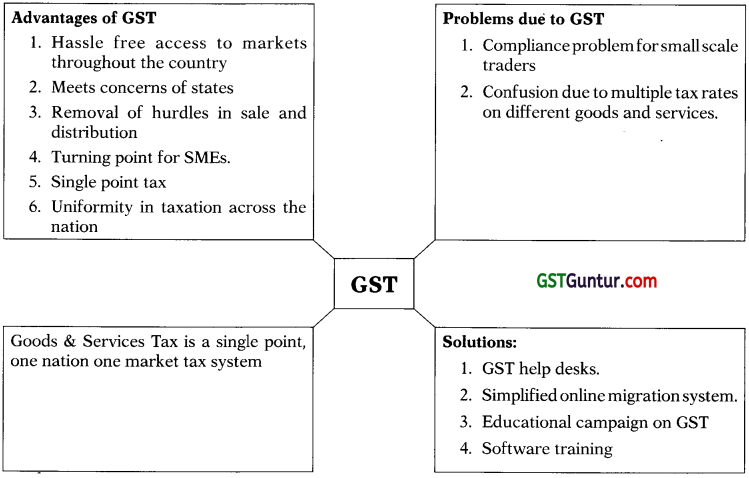
![]()
![]()
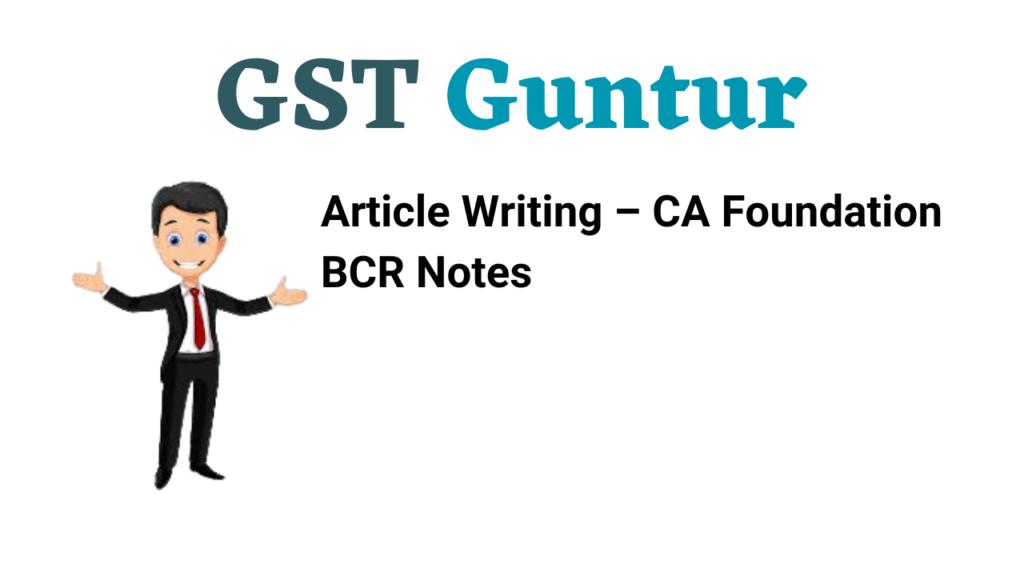
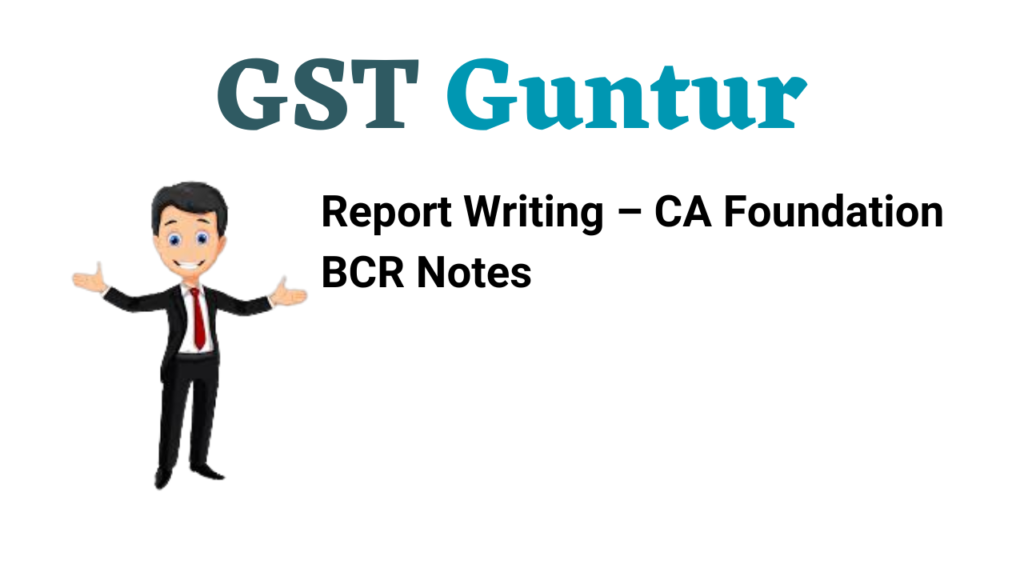

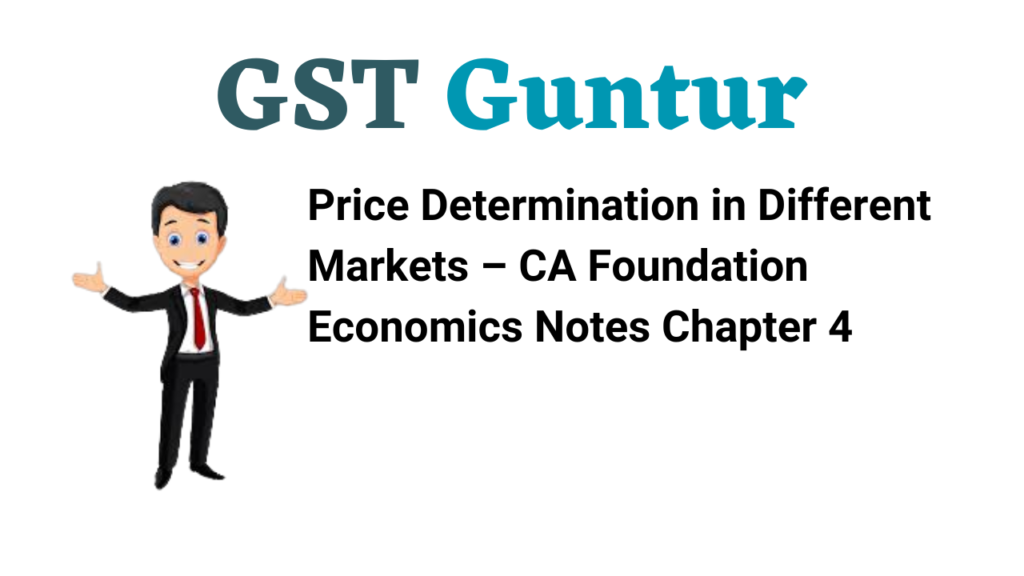



 The The above table shows that at a price of ₹ 3 per unit, the quantity demanded equals quantity supplied of the commodity. At ₹ 3 two forces of demand and supply are balanced. Thus, ₹ 3 is the equilibrium price and equilibrium quantity at ₹ 3 is 300 units.
The The above table shows that at a price of ₹ 3 per unit, the quantity demanded equals quantity supplied of the commodity. At ₹ 3 two forces of demand and supply are balanced. Thus, ₹ 3 is the equilibrium price and equilibrium quantity at ₹ 3 is 300 units.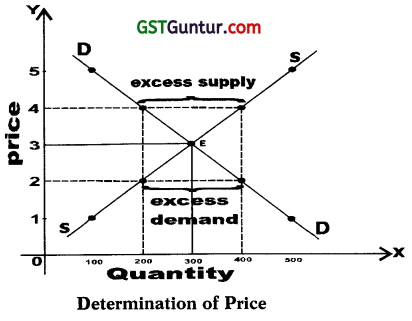
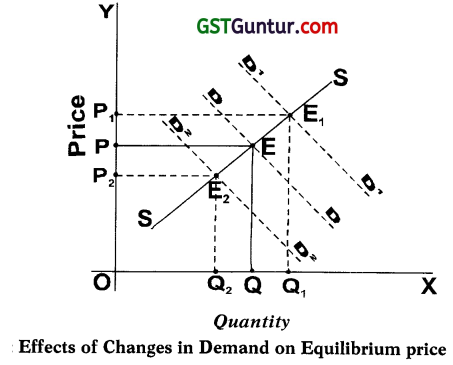
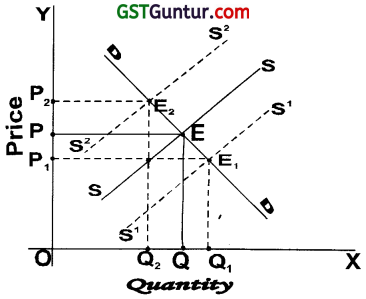

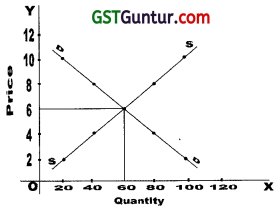
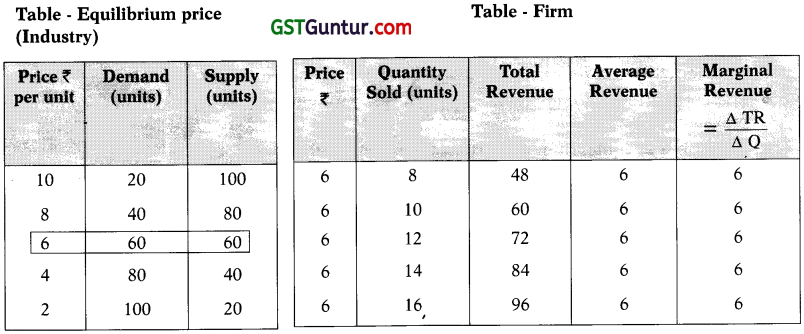 → In the table – the equilibrium price for the industry has been fixed at ₹ 6 per unit through the inter-action of market demand and supply.
→ In the table – the equilibrium price for the industry has been fixed at ₹ 6 per unit through the inter-action of market demand and supply.